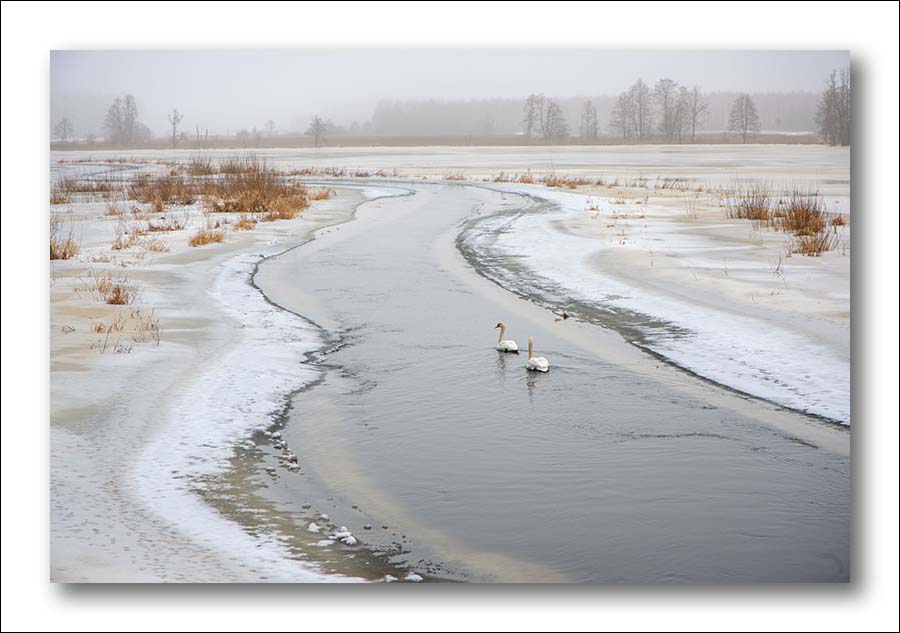It is easy to drive to this phantascic landscape by car. The big
roads are in very good condition.
In winter there is more snow and ice on the roads.
The continental climate may cause that it becomes realy cold
sometimes. ( ↓ ) |
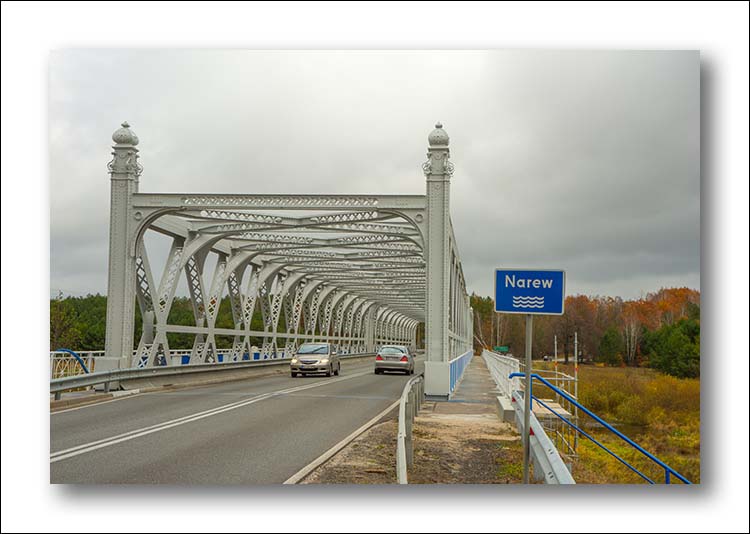
Bridge over the Narew river at Ryboły |
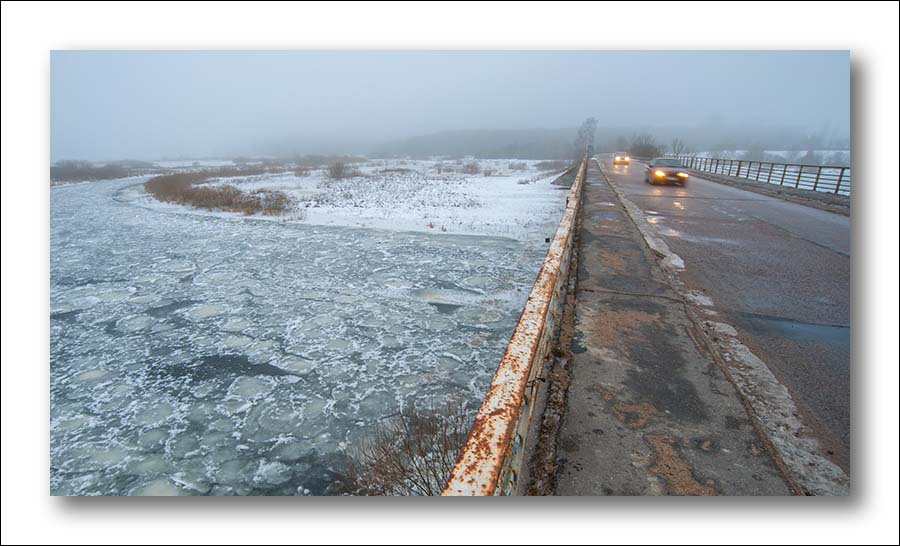
The bridge over the frozen Narew between Strabla and Doctorce |
If you want, you can find many unpaved roads between the small villages.
You don't have to use them, but you are allowed to. |
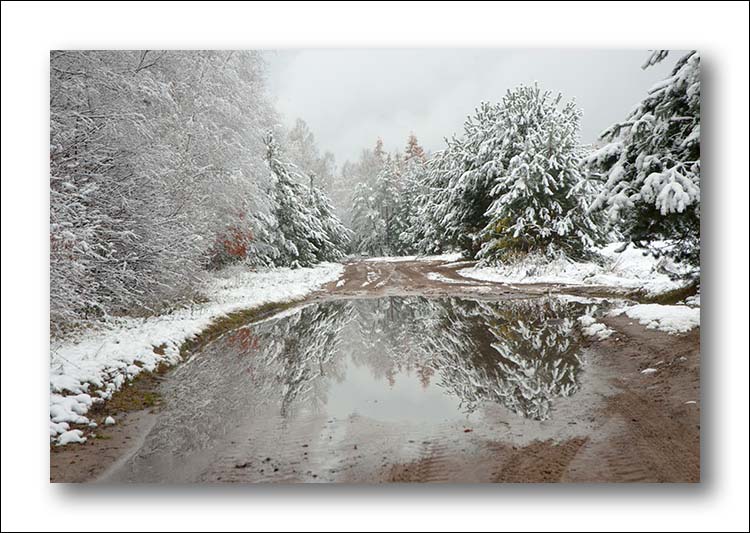
|
The region which I visited on my fototours in autumn and winter is
not as well known as the neighbouring nationalparks. The Narew-River
runs from Belarus along the northern border of the Białowieża National
Park. This Nationalpark is well known for its wolfs and european bisons.
The upper valley of the Narew river ends at the smaller Narew
National Park. Some kilometers downstream the river enters the
Biebrza National Park famous as resting place for thousends of migrating
waterbirds.
The upper Narew River Valley is under protection as a
"Natura 2000" Site.
The villages Trześcianka, Soce and Puchły are
the best known among a few similar villages on the northern bank of the
river. They invented the name "The Land of Open Shutters". to become
better known as tourist destination. |
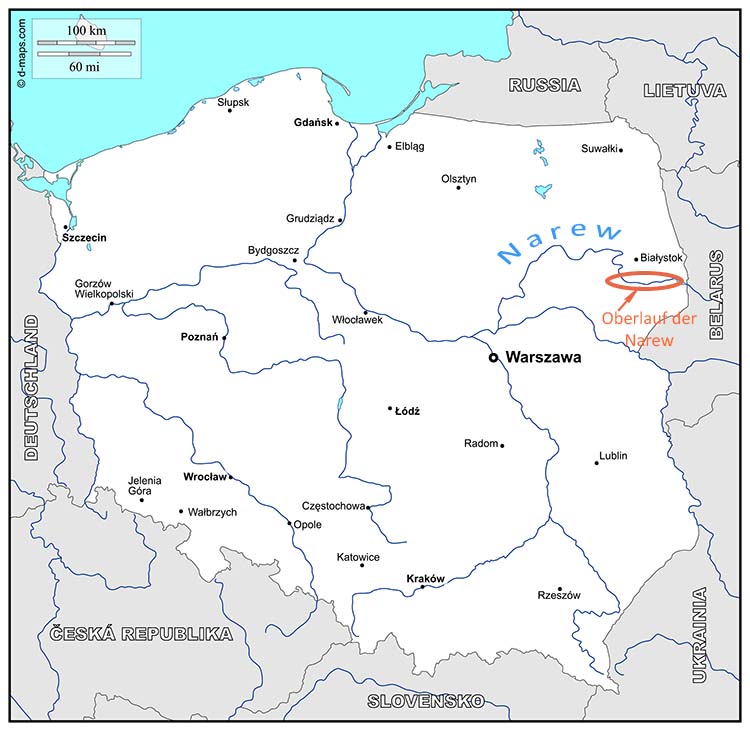
|
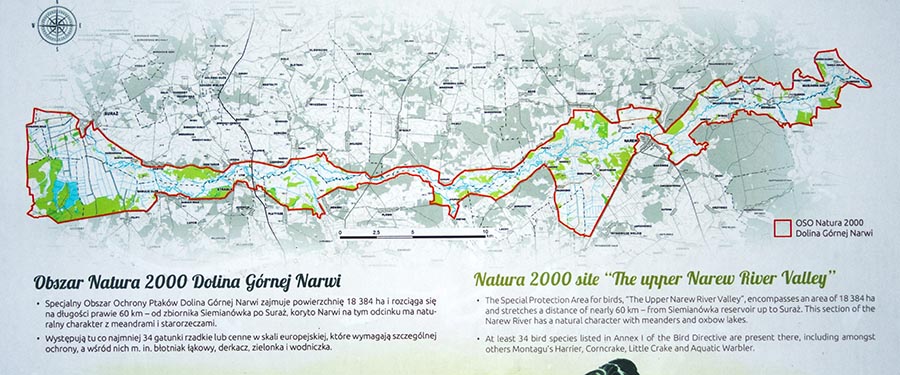
|
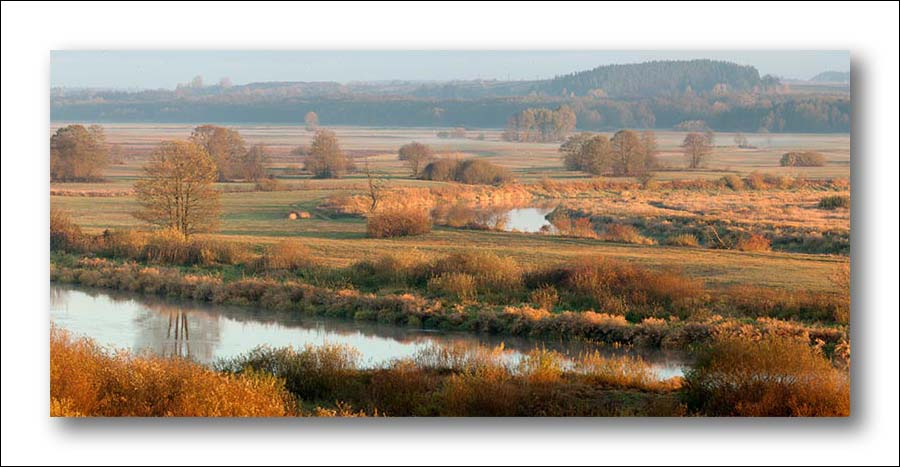
The river meanders in the wide valley. |
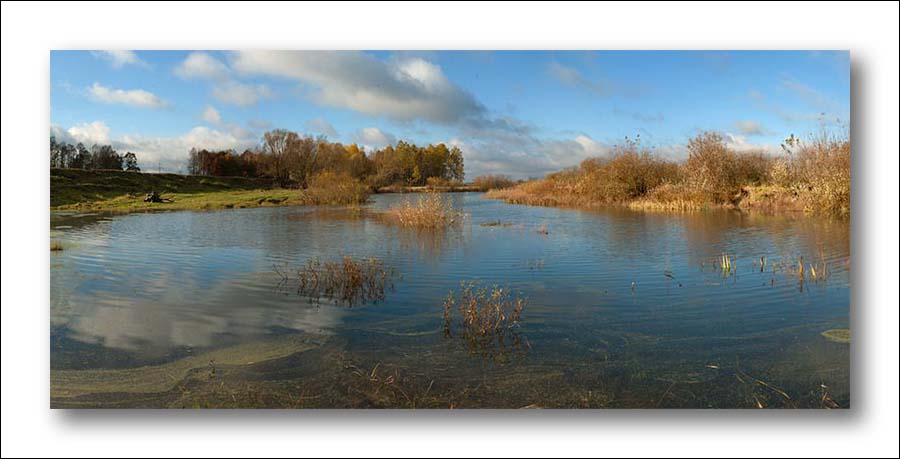
When I came there at the end of October, the autumn flood started to
rize.
|
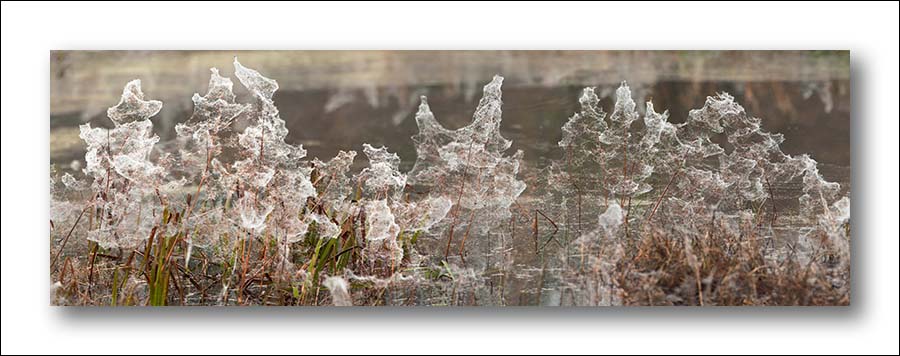
Freezing dewdrops visualize the delicate forms of the spider webs.
|
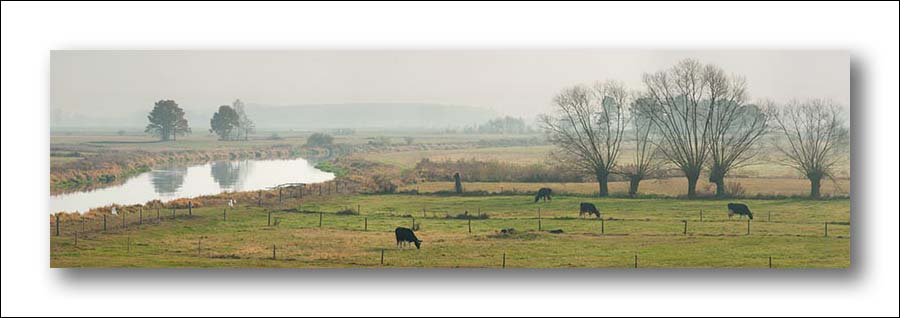
Cattle can feed at the river bank in October.
But soon the autumn
flood started to submerge these areas. ...
|
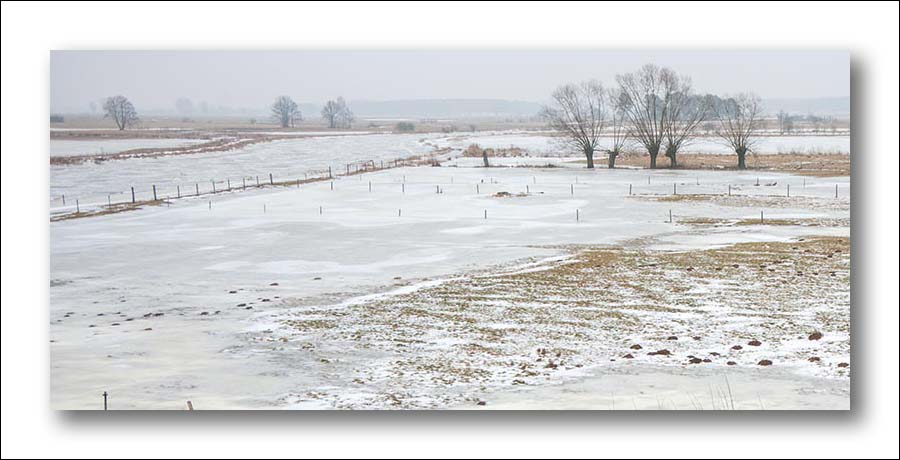
... Ice and snow cover the meadows in January and will remain until
spring.
|
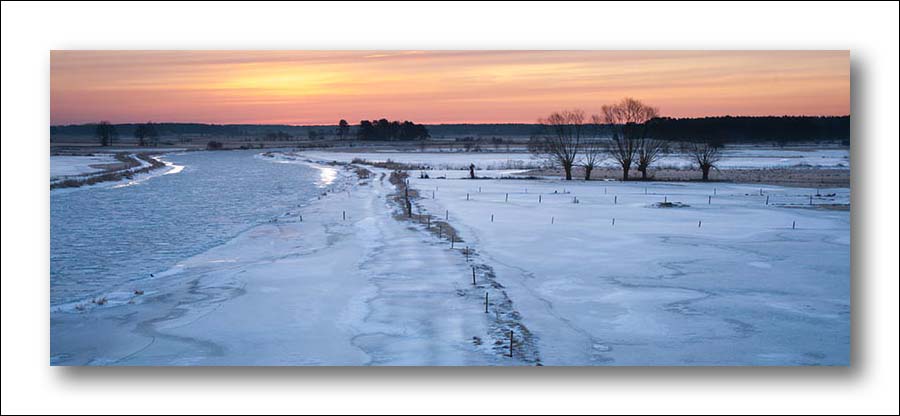
The best view on a river is from a bridge, but there are very few
bridges crossing the upper
Narew. The previous three images are taken
from the bridge near Strękowa Góra (at the south end
of the Biebrza
National Park)
|
The landscapes that I found along the river in autumn 2016 made me
very curious about what it might look like in winter?
|
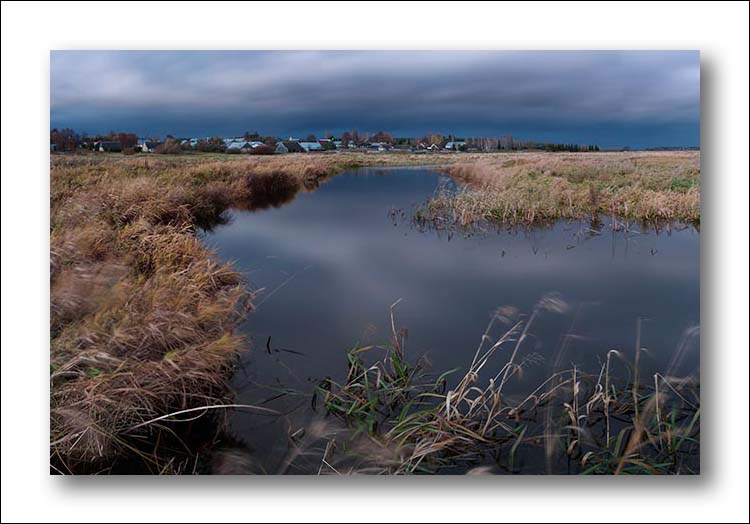
|
... And here is an immage from January 2017 of almost the same location as above at the river bank
with the village
Ciełuszki in the background.
|
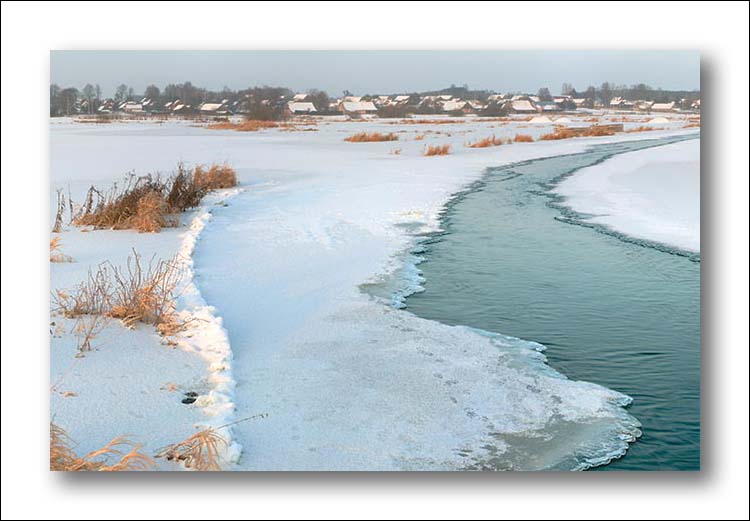
|
|
When I came into this region for the first time I was happy to
find the tracks of beaver
activity along every watercourse. |
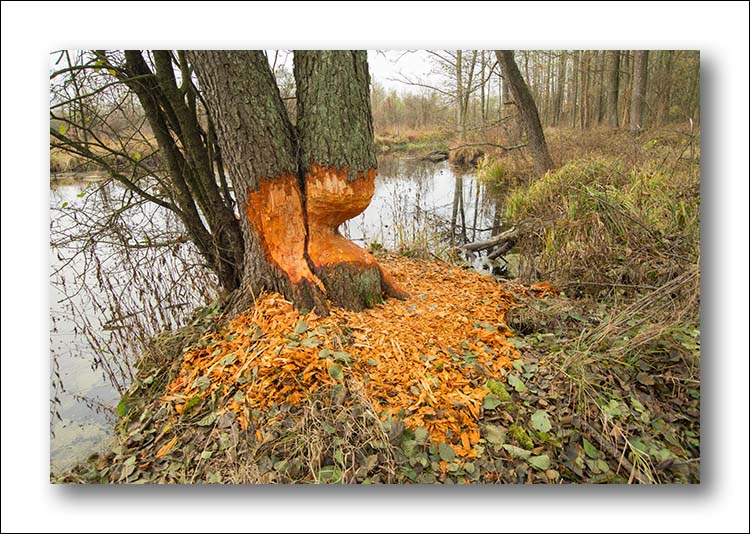
|
Beavers are active also in winter.
Soon I had to admit that they cause
consicerable damage to forests, riverbanks and dams in the region.
|
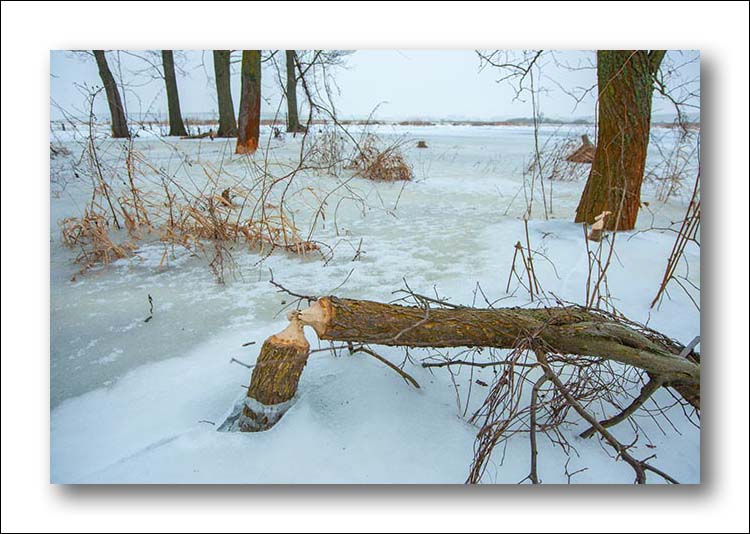
|
Often they try to fell thick old trees. They will not succeed,
but they kill the tree by gnawing off the bark all around the trunk
basis.
PeopIe try to protect their favorite trees in Parks, at
bathing places and in National Parks with plastic cuffs wrapped around
the trees bases.
|
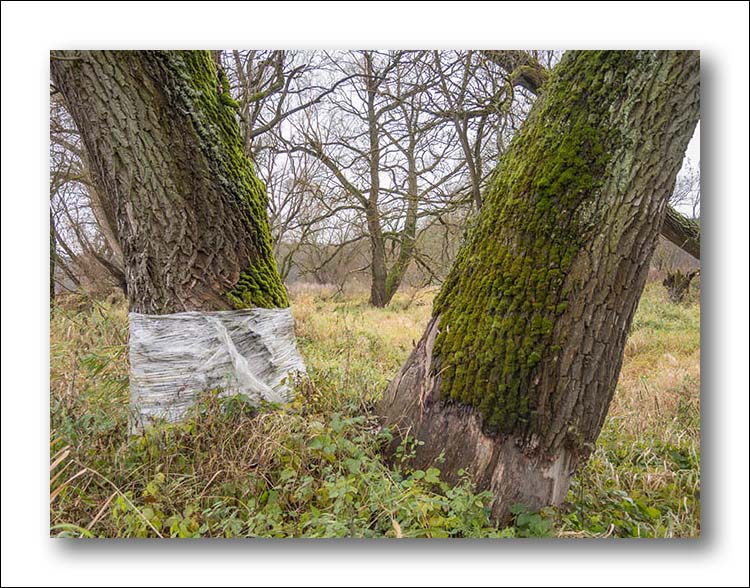
|
In late autumn it is very calm along the river.
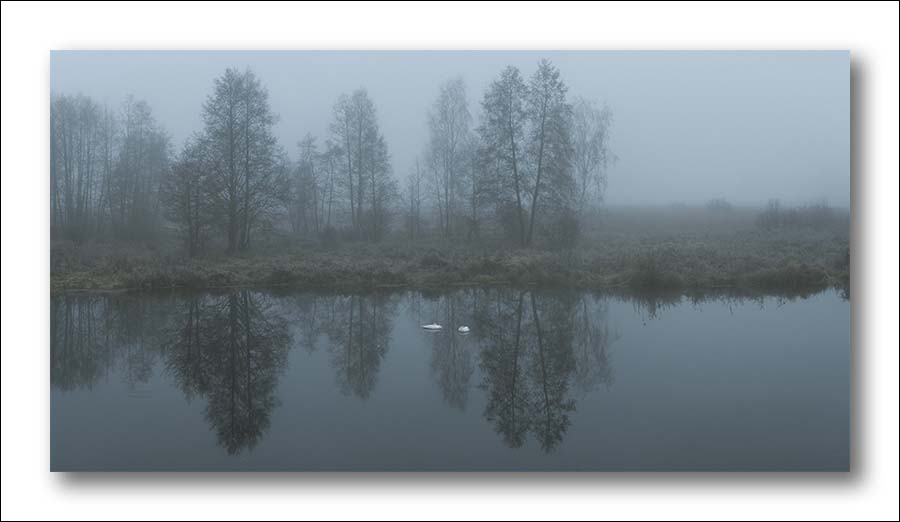
|
In the first days of November 2016 the first snow fell while
the autumn flood was still rising.
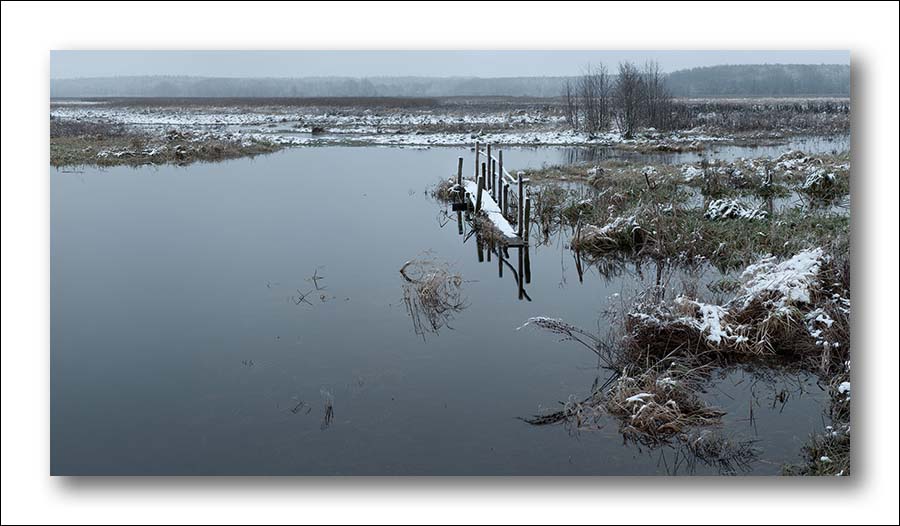
|
When I came back to the Narew river in January 2017, the meadows at
the river
were still flooded and then they were also covered with ice.
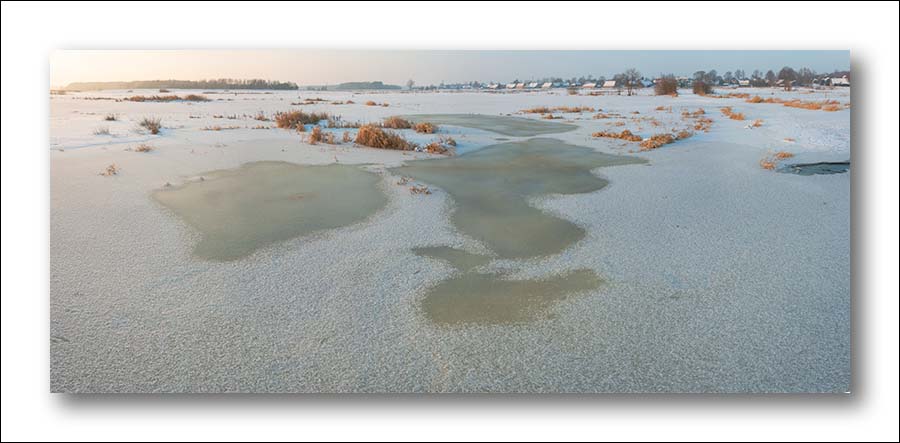
|
Wind has blown together dunes of snow.
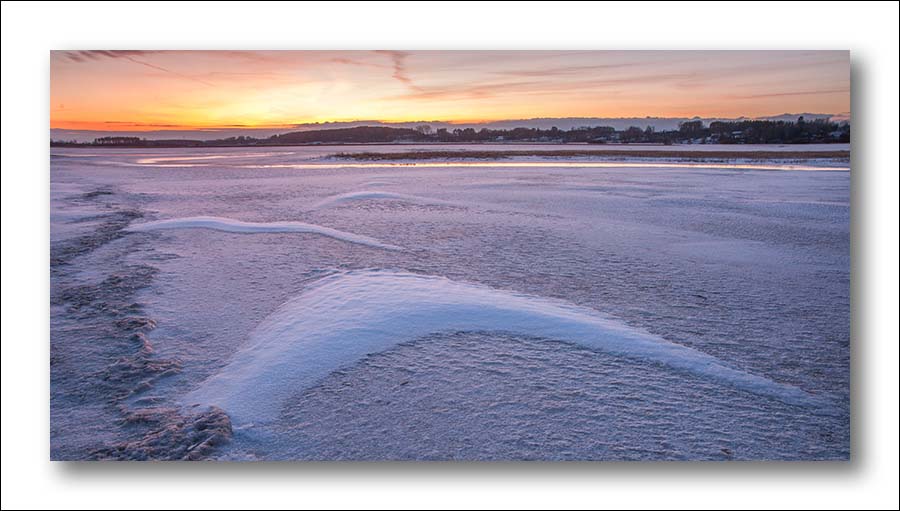
|
In warmer periods the underlying wet earth had coloured the ice in shades
of brown and yellow.
|
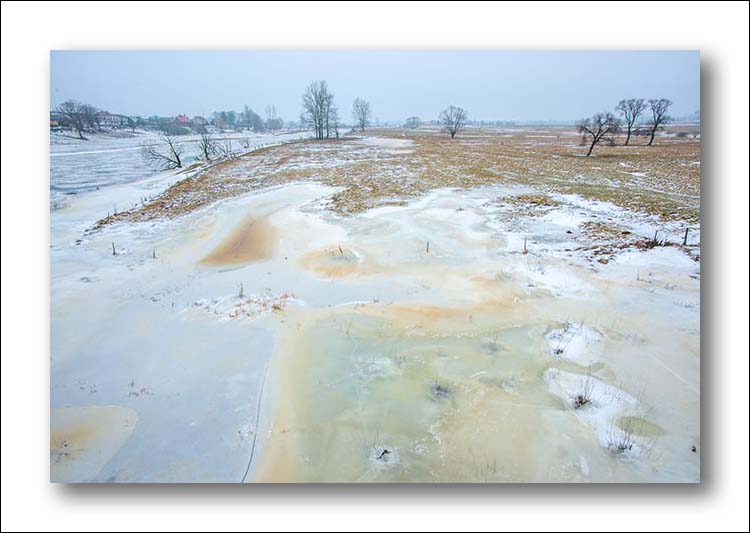
|
Walking from the edge of the valley toward the river is always
an interestingand a little adventure .
Fast running water has melted the overlying ice
away.
|
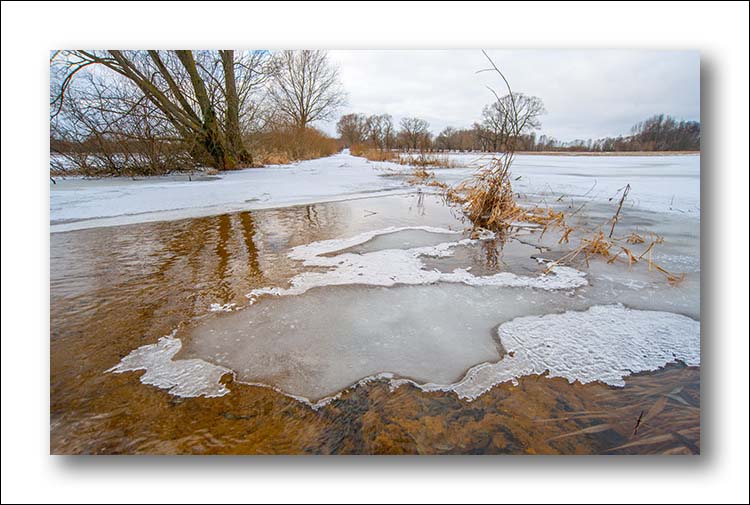
|
When you get to such a location, you have to be careful!
|
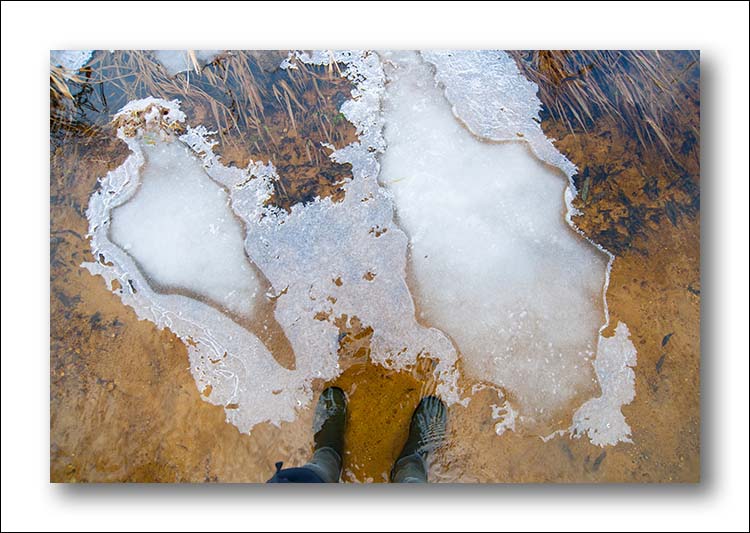
|
A frozen river is an amazing sight. It is accompanied by the the
sound of cracking ice from somewhere inside the river.
This is
the view from the bridge over the Narew River at the little town Narew
which gave its name to the river.
Standing on a bridge, the sound of cracking ice
is just a sound of winter. When I stand on the ice and the cracking
sound surprizes me, it is difficult to stay calm and cool although I had
tested shortly before that the layer of ice under my feet is thick and safe. ( ↓ )
|
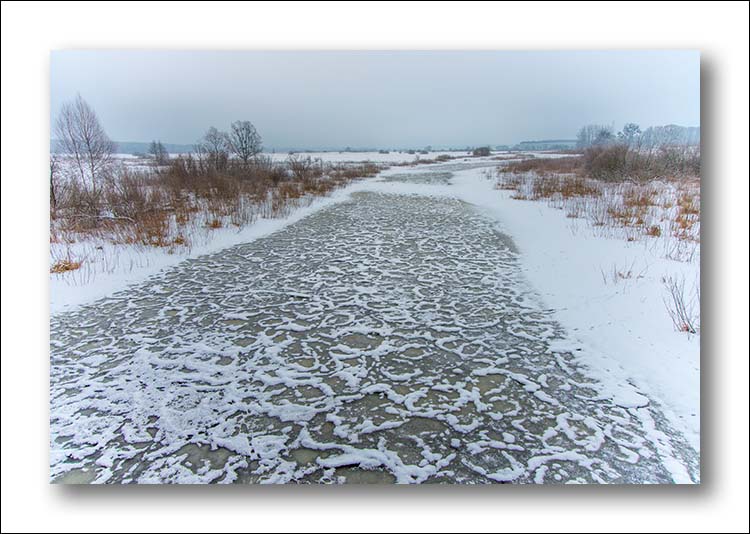
|
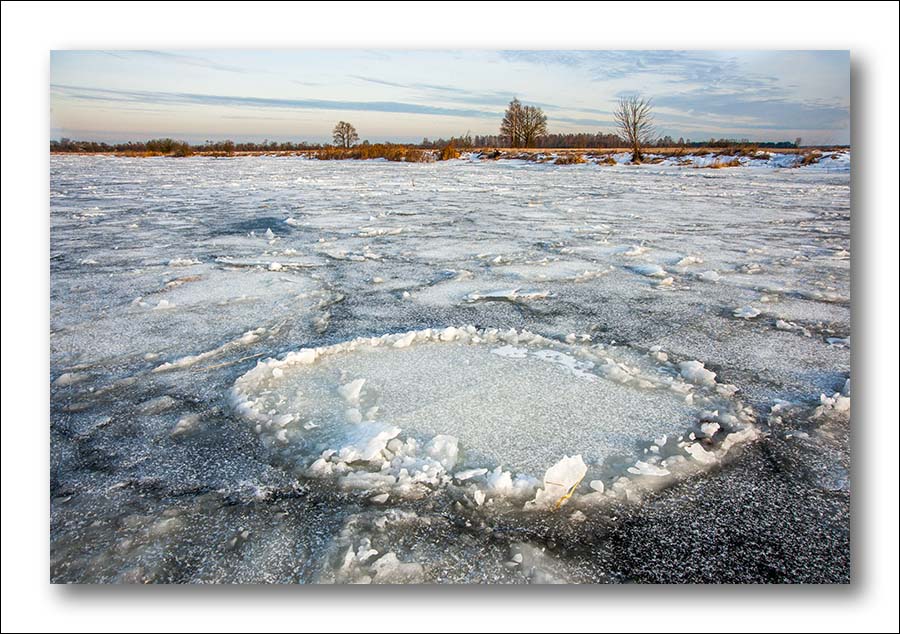
|
The next three pictures are taken from the bridge between
Strabla and Doctorce.
|
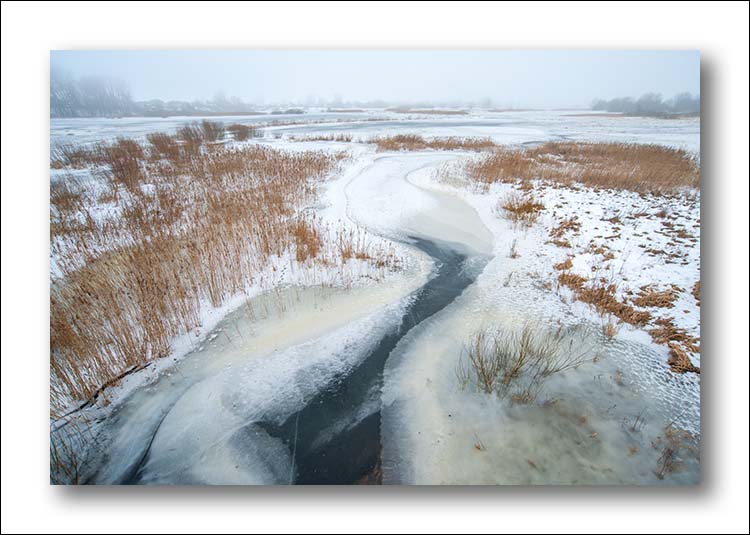
|
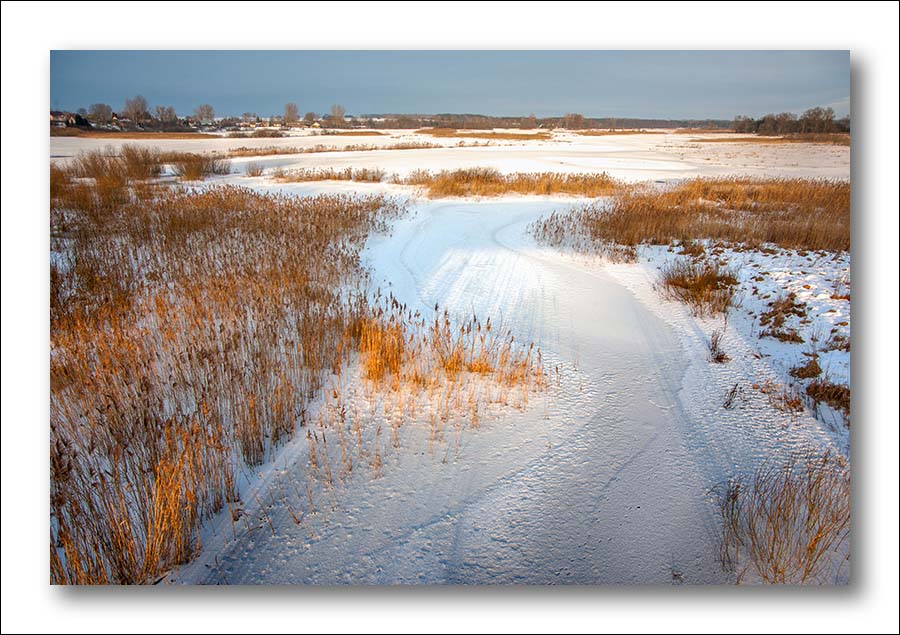
|
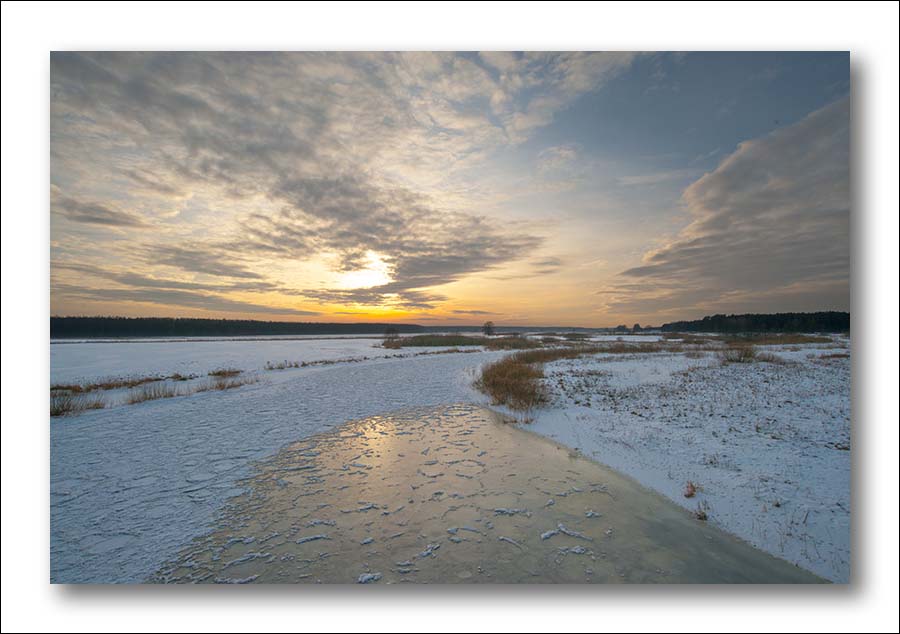
|
Many interesting natural monuments are found in the landscape
off the valley. This old oak tree stands at the small village Przybutki
(near Krzywiec).
|
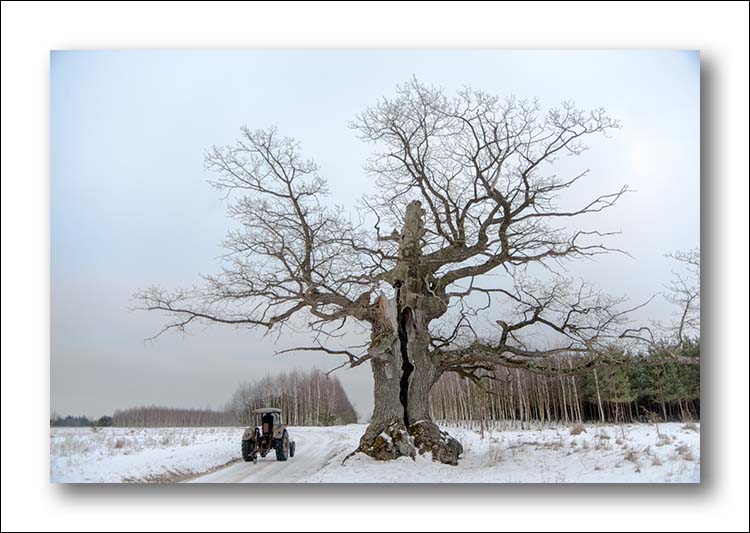
|
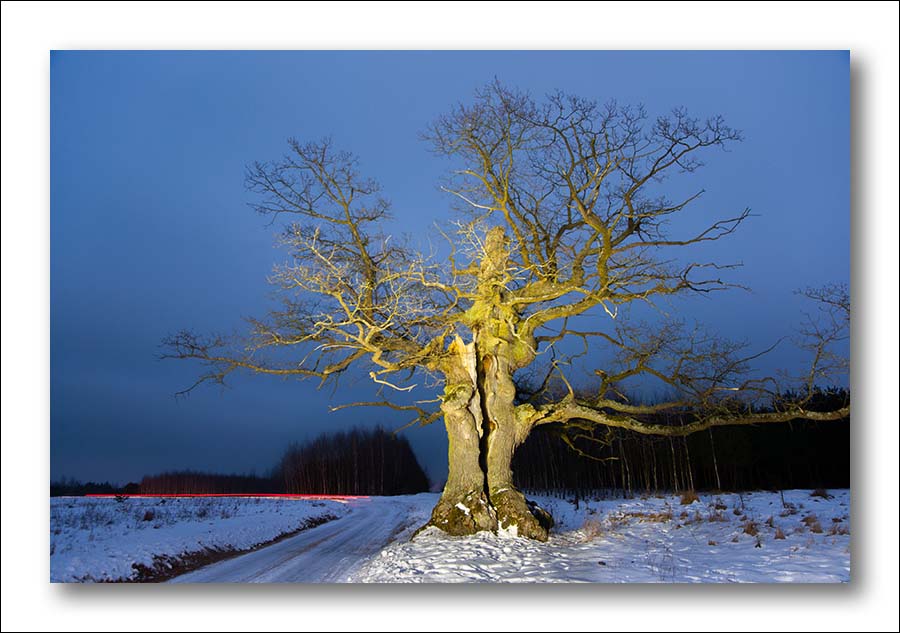
|
This willow tree with its numerous misteltoe plants on the branches
stands near the village Soce.
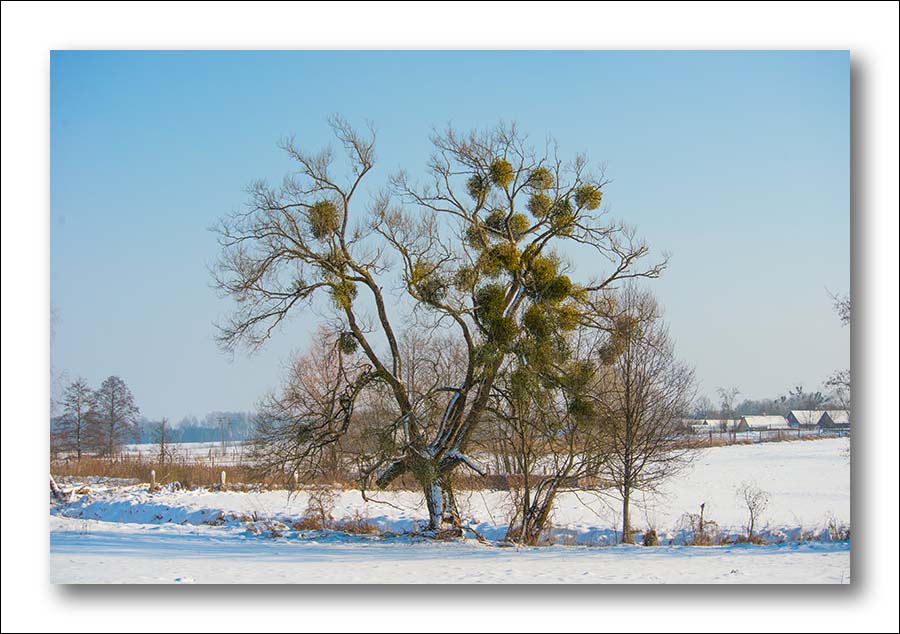
|
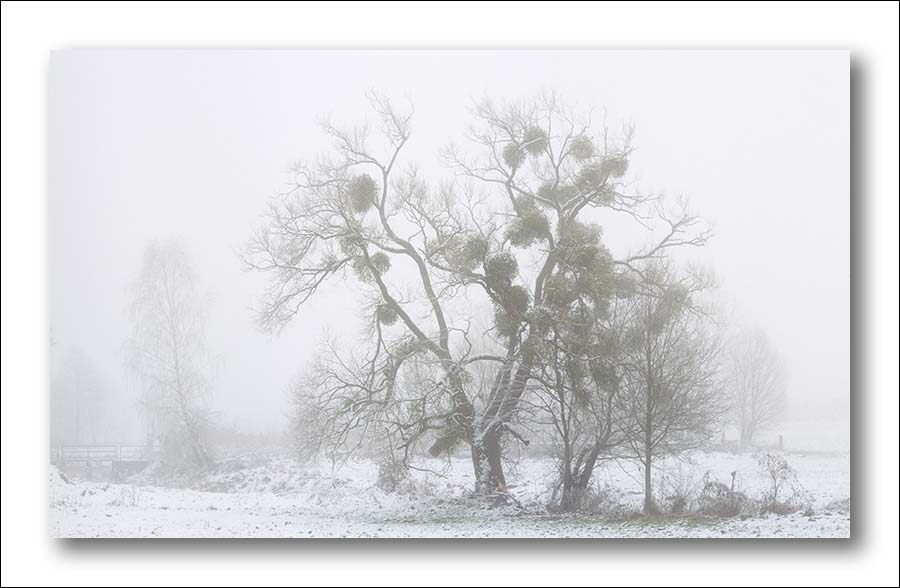
|
This absolute unspectacular forest road enchanted me on a gray
winter day. In the first picture the blades of grass still stand upright in
October. |
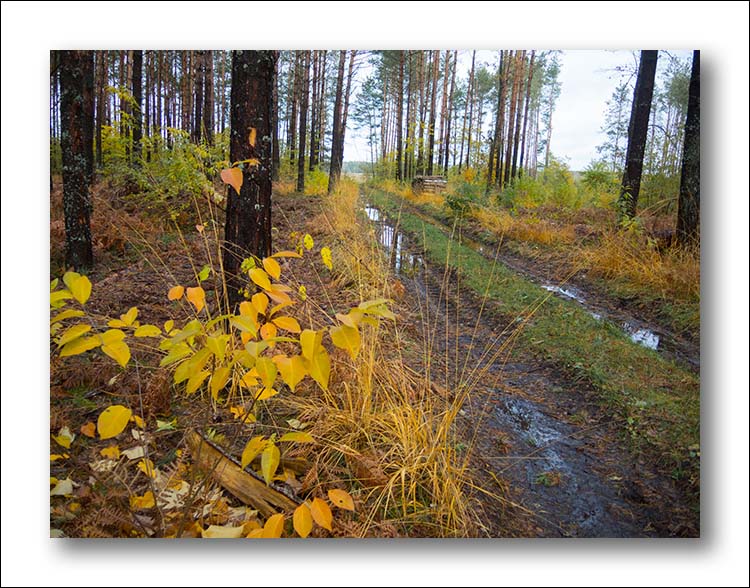
|
Winter conditions let the blades of grass break down but some of them peaked
still a bit out of the snow. From the far it did not look interesting.
But the white snow became the perfect background to the tiny skulptures
formed by the crumpled blades of grass.
The next 7 pictures are taken in the natural sculpture garden along
this forest road. ( ↓ )
|
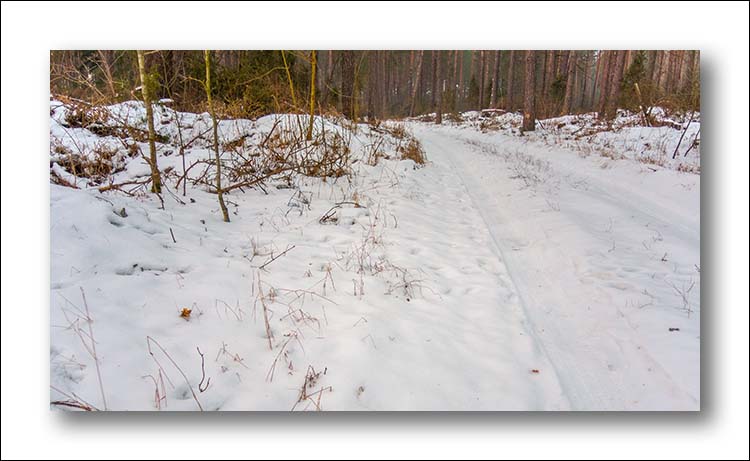
|
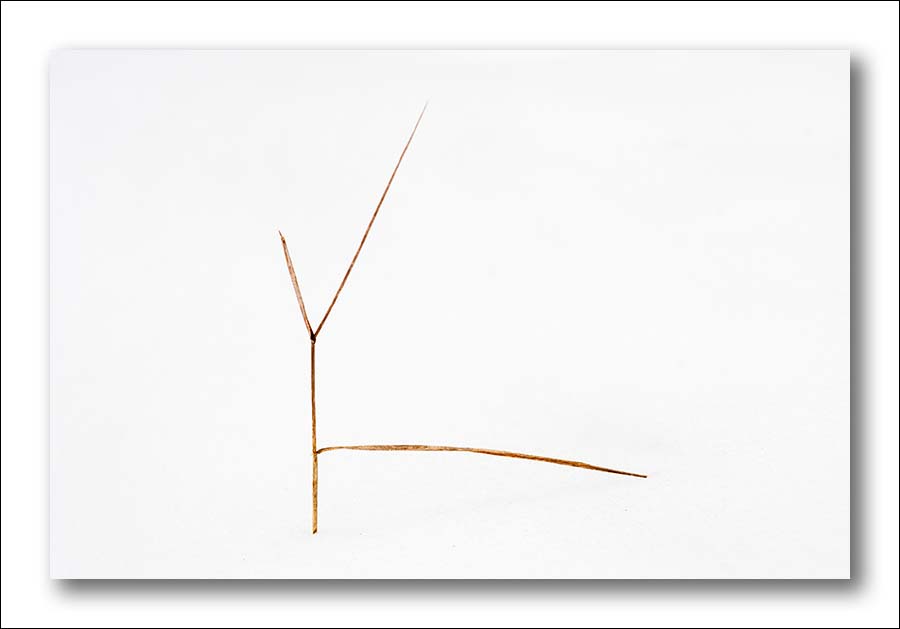
|
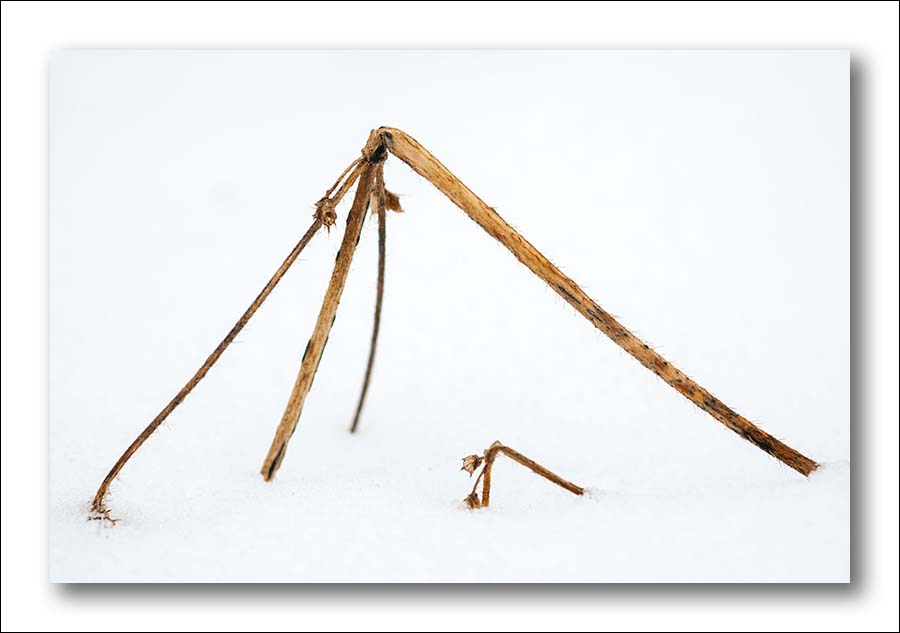
|
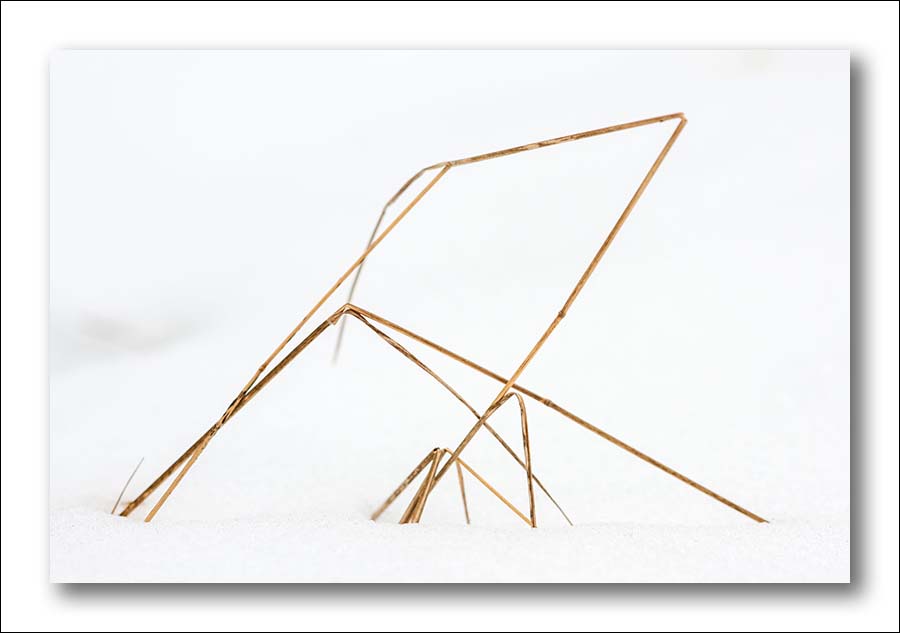
|
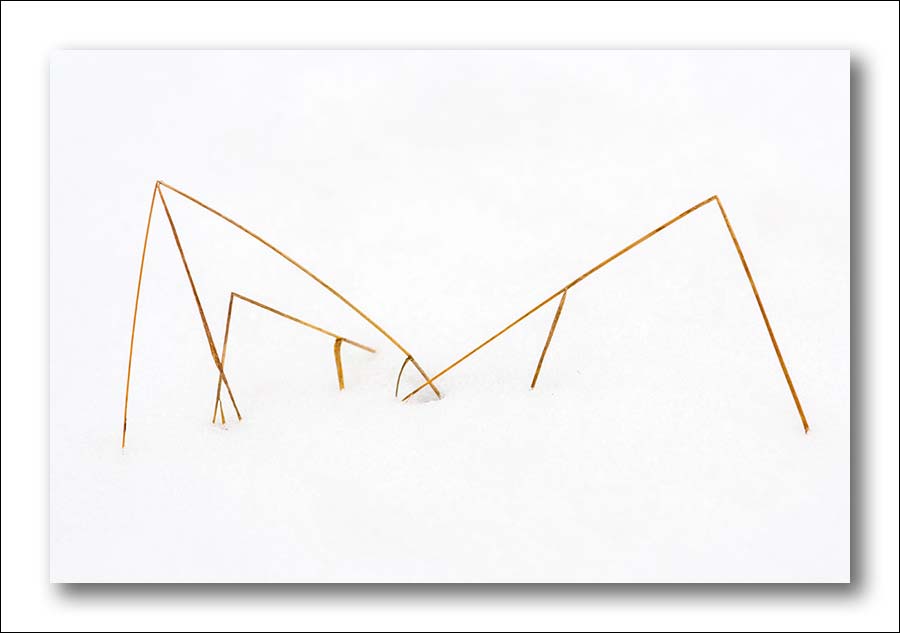
|
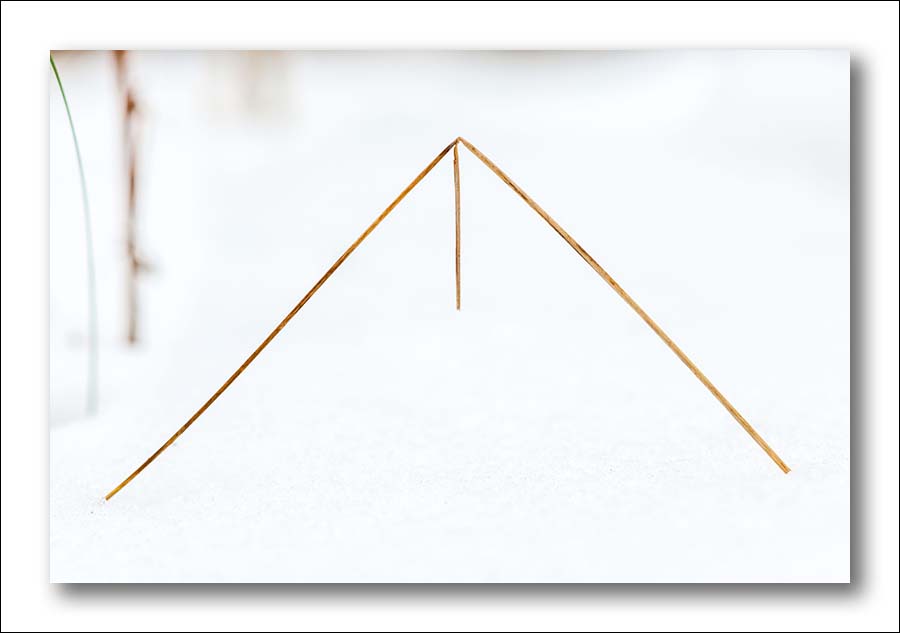
|
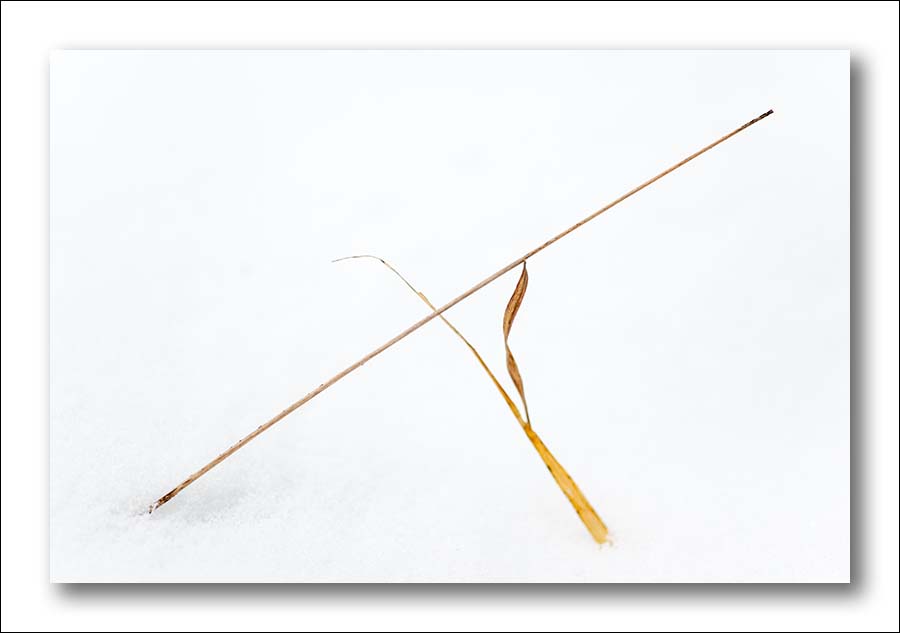
|
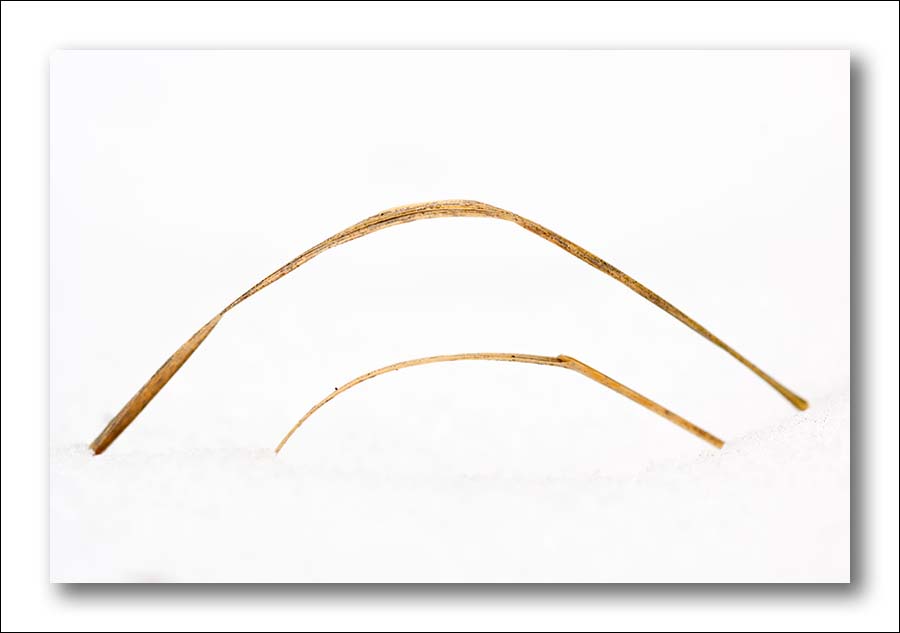
|
It was easy to find perfect places to stay overnight. My
favorite place is at the edge of a forest, with a wide view over the
Narew valley.
|
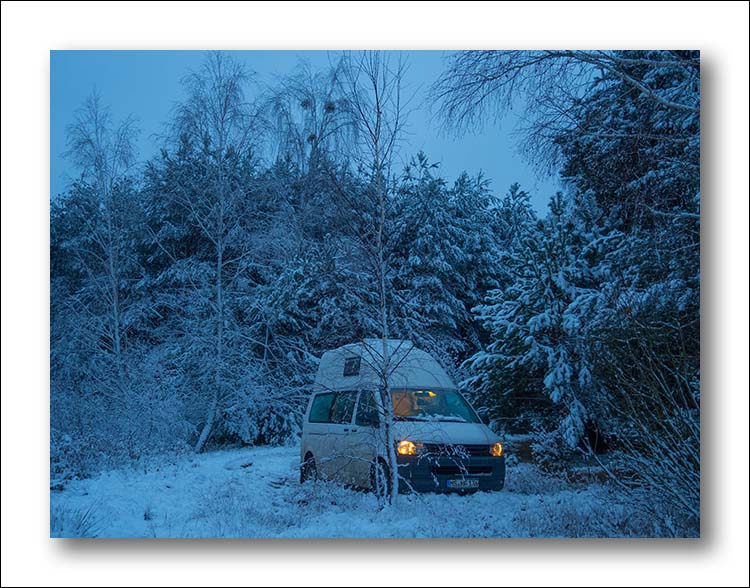
|
|
|
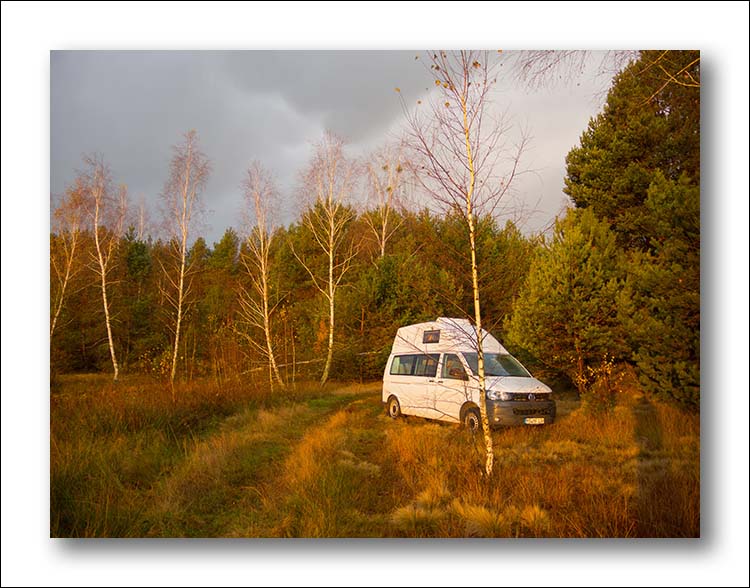
|
Part 2: The villages
(35 images) |
Some villages in the upper
Narew River Valley are particular. They still have many old wooden
houses. and many of these houses show colourful ornaments and window
shutters.
|
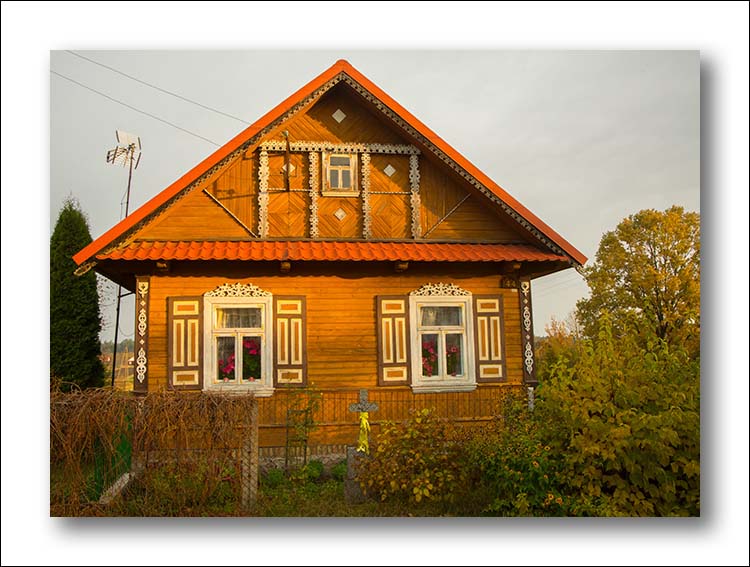
|
But that is not all. The
villages still have preserved a traditional villagescape. Only few
people can make their living in the villages.Therefore old peaple
dominate the villagelife at least during the week.
|
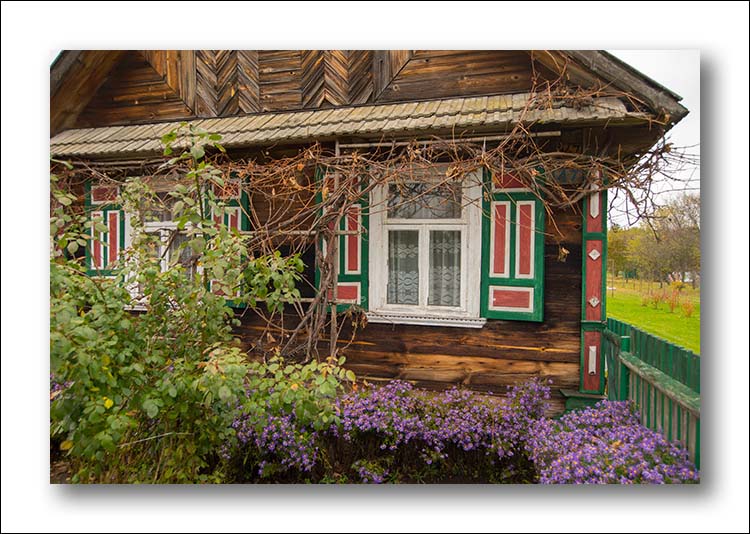
|
Modern infrastructur makes life
easier and so it comes to the villages too. Pavement of the village road
is one of the most visible renovation.
I tried to document the
traditional elements of the villages and with that the tracks of
traditional life which still occure frequently there.
|
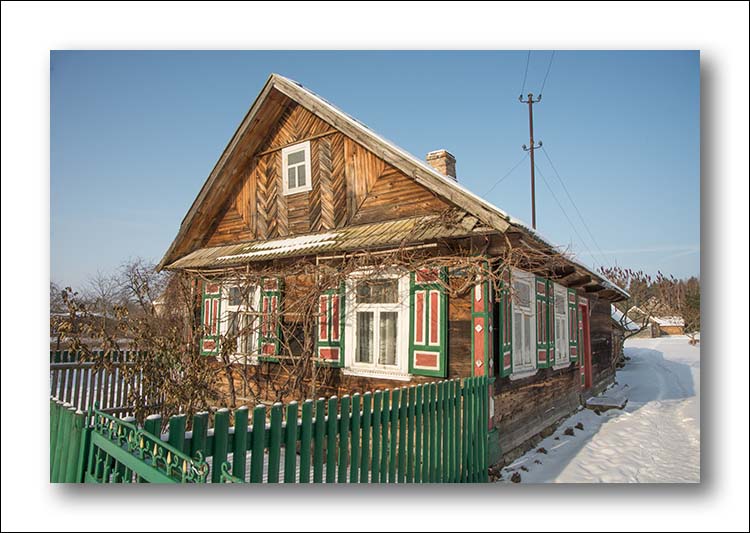
|
Following the road from Białystok to the small town
Narew you come threw the village Trześcianka. On both sides of the
village road there are many wooden houses with the typical decorations.
|
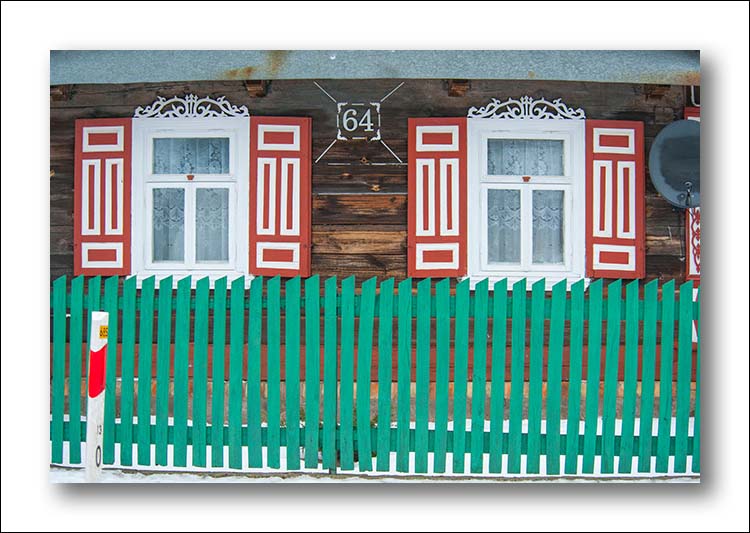
|
Wooden fences are also traditional elements of the
villages. Sometimes they are carefully renovated, sometimes they are
replaced by cheeper fences made of metal or beton elements.
|
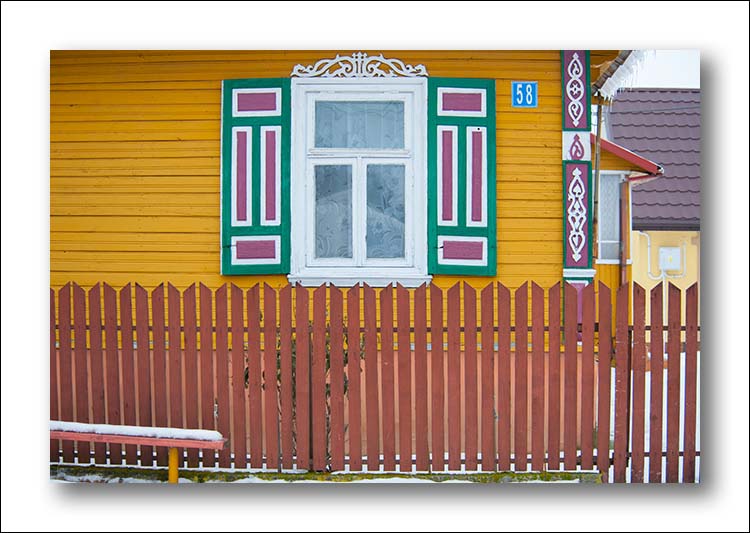
|
When you leave the main road in Trześcianka turn
right and follow the small raod to the next village you come to Puchły.
The big orthodoxe church is freshly renovated and the main attraction in
this village.
|
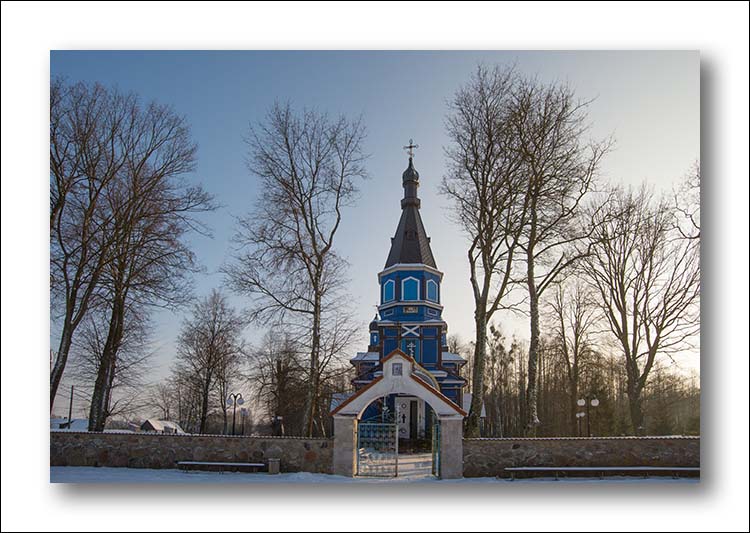
Orthodoxe church in Puchły
|
| |
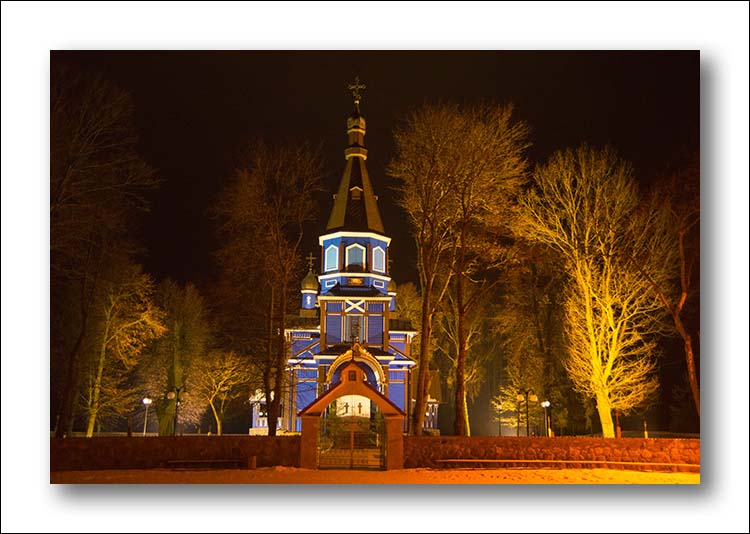
|
|
Following the road along the north rim of the
valley you come to Ciełuszki. This village is situated at the rim of the
valley and close to the river.
In this picture it was the winter
himself who decorated the old wooden stable.
|
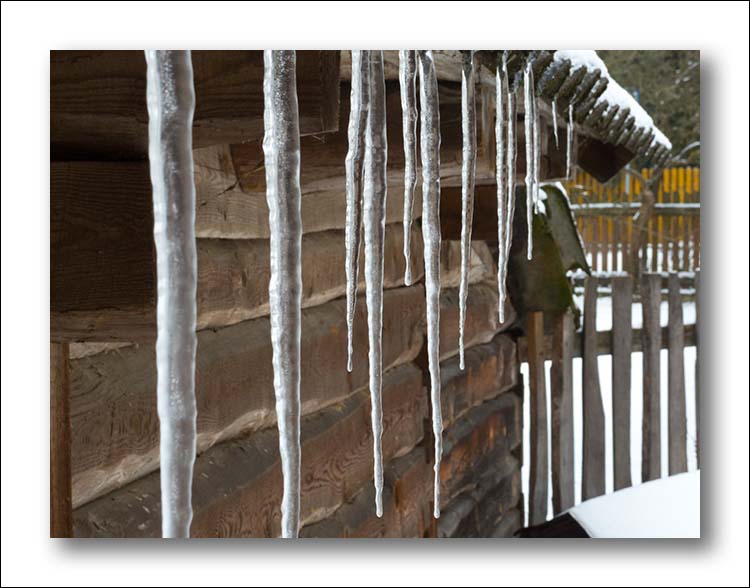
|
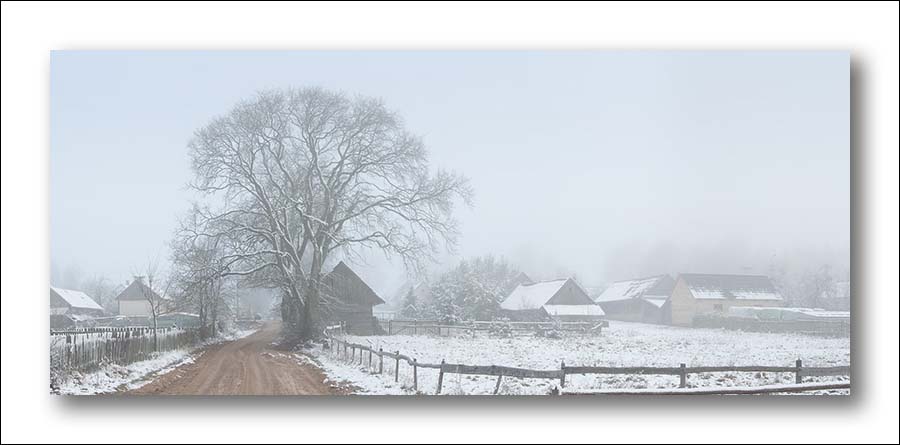
Entrance to the village Ciełuszki from the river side.
|
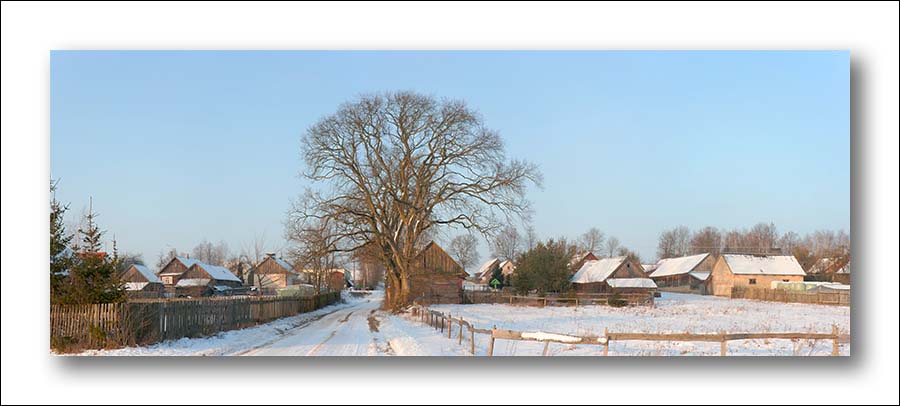
|
Ciełuszki has nicely decorated old wooden houses
and old stables are found in the yards.
|
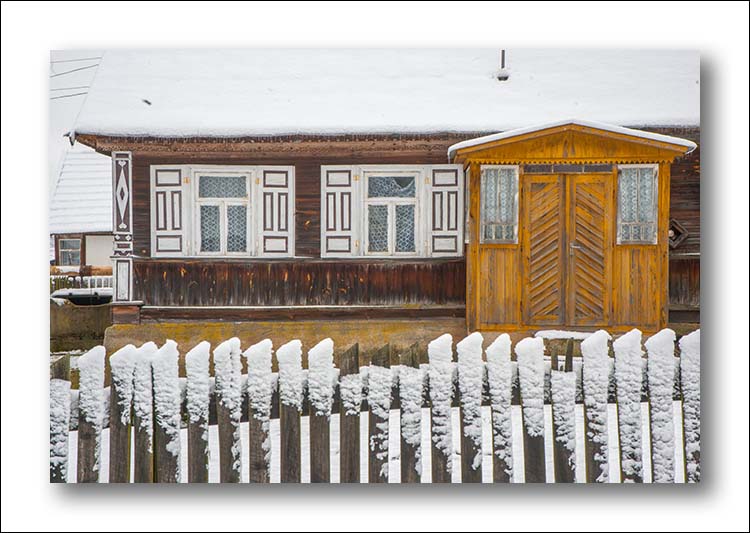
|
Horse breeding is run unter
traditional conditions.This farmer uses a well to water his horses.
His animals live in
a nice old wooden stable. ( ↓ )
|
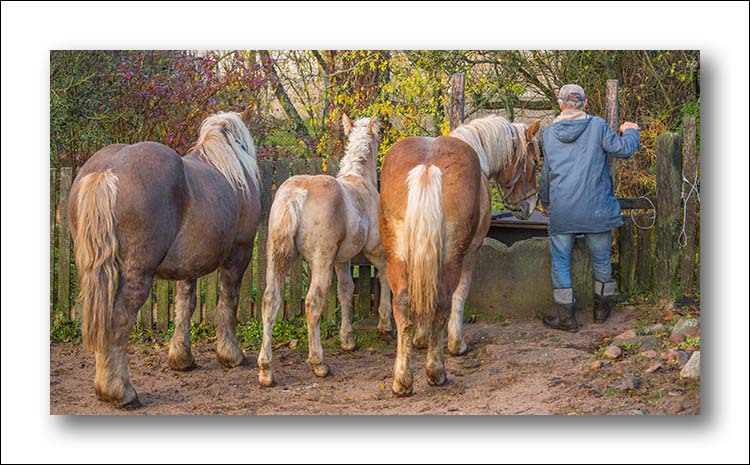
|
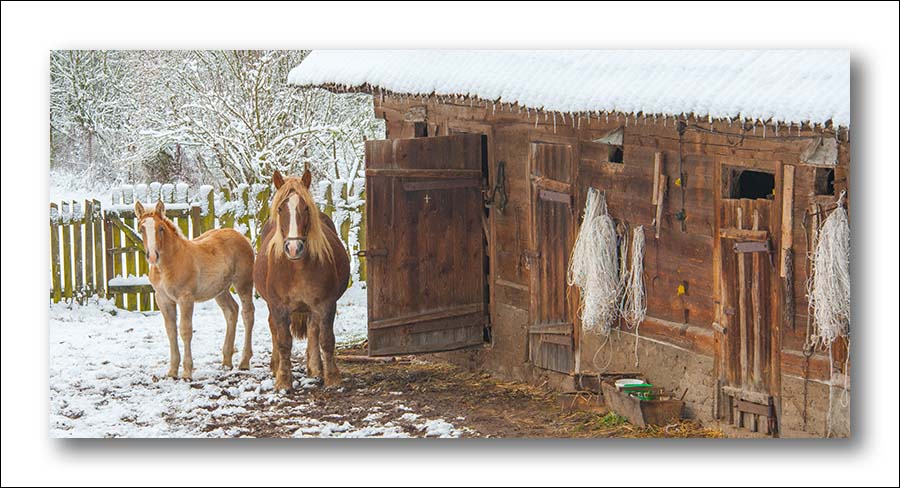
|
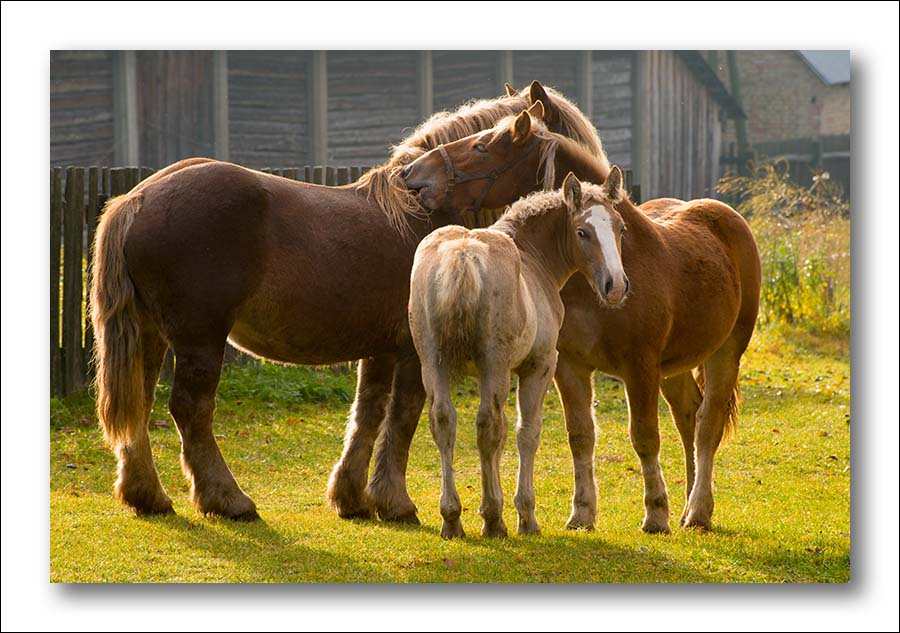
|
In this village the main road
was freshly tarred. And the mornig sun heated the black surface quickly.
So it became a nice playground for the young cats of the village.
|
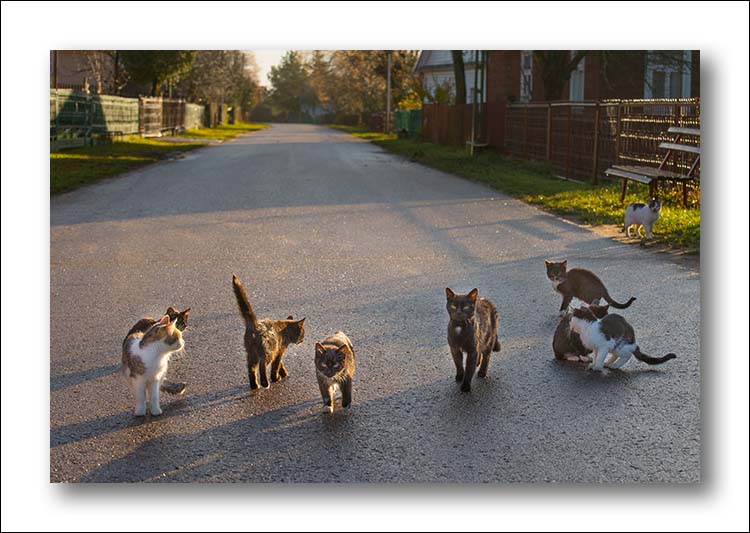
|
| |
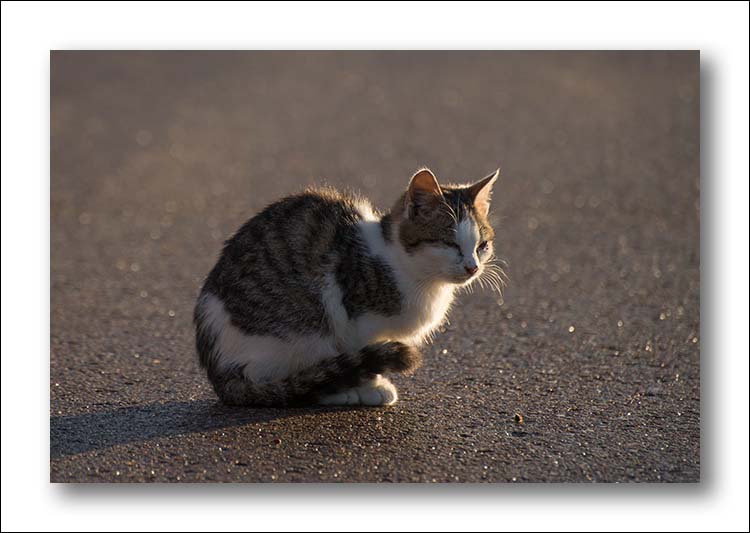
|
Every step of the strange
photographer is observed carefully from behind the fence.
|
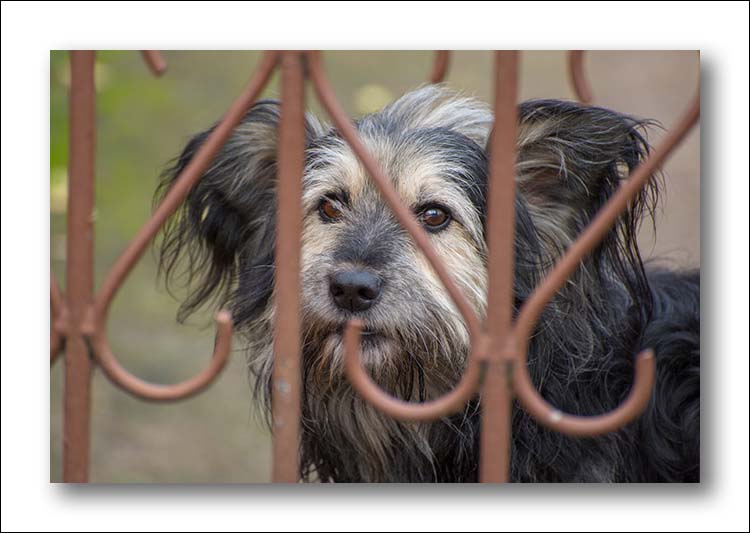
|
|
Soce is situated some
kilometers away from the river. This village has preserved the
traditional villagescape best. The main roads have still their coverage
of cobblestone, accompanied by broad stripes of grass at both sides in
front of the fences.
Many traditional farm yards are in good
condition. And renovated buildings became adapted better to the
traditional surrounding than I have seen it in many other villages.
|
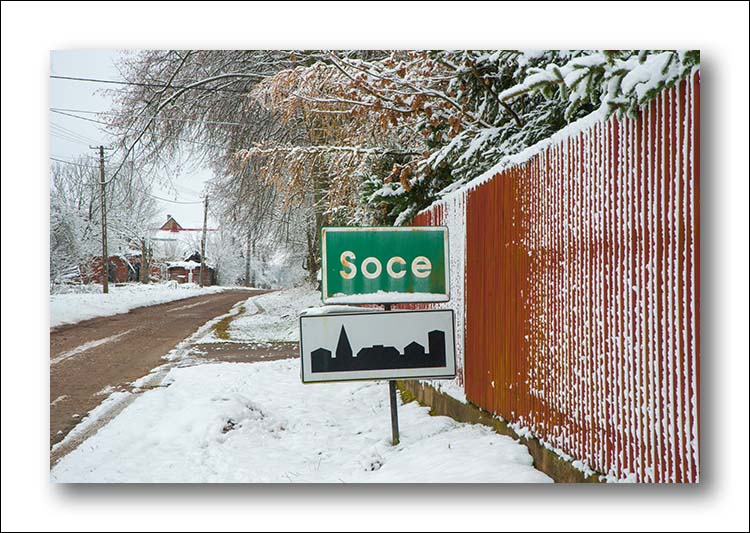
|
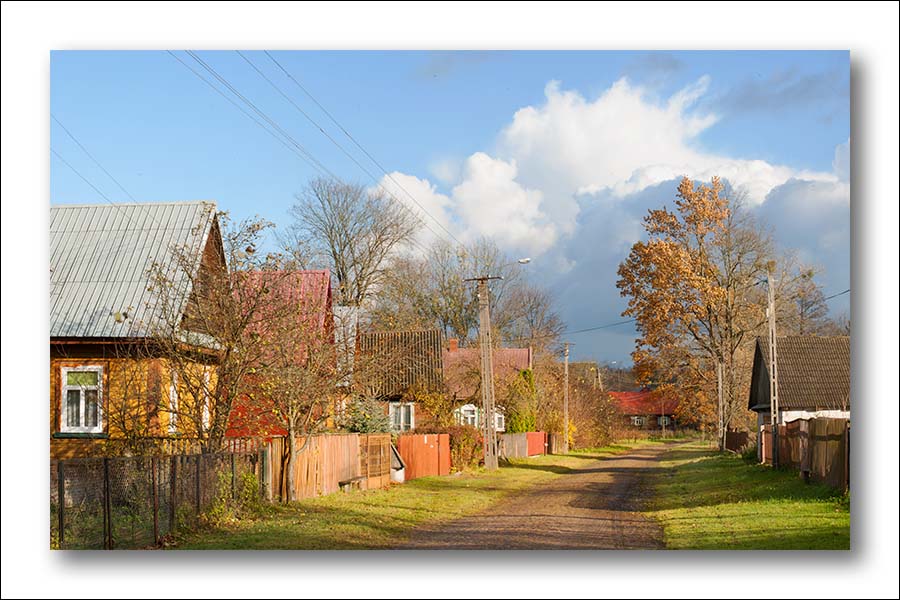
main village road in Soce
|
Another
section of the main village road in Soce with old cobblestone.
|
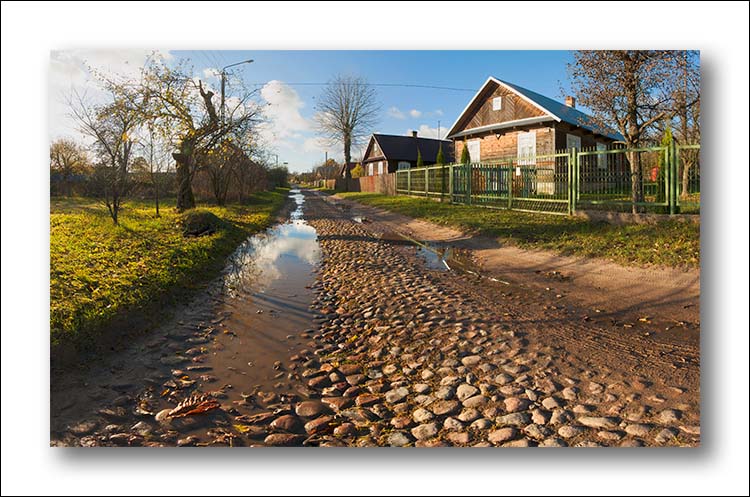
|
The
cobblestone road and the nighbouring yards are the habitat of flocks of
tree sparrows.
They like to take a bath in the puddles.
|
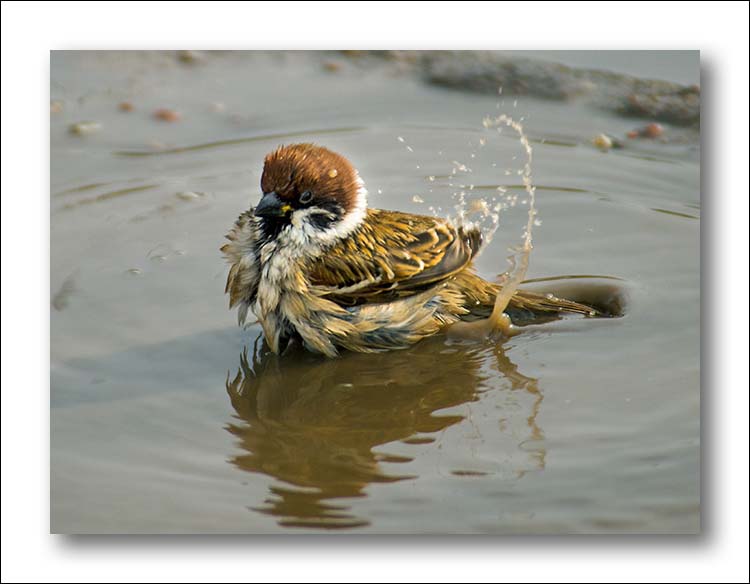
|
Between the cobblestones they find something to feed on.
|
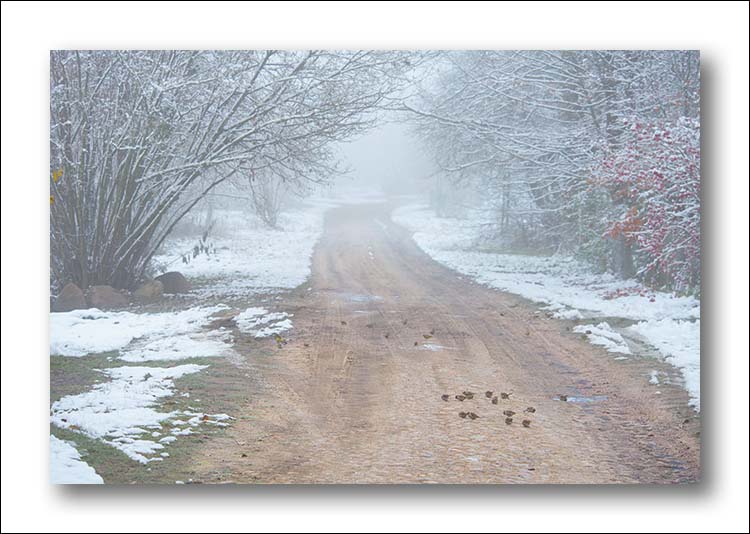
|
It is not
far to the next chicken yard where some foodremains might be found in
the pot. ( ↓ )
|
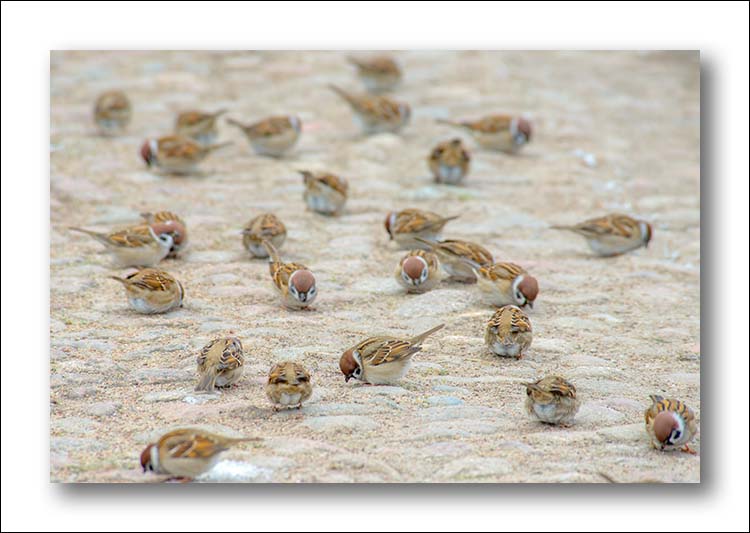
|
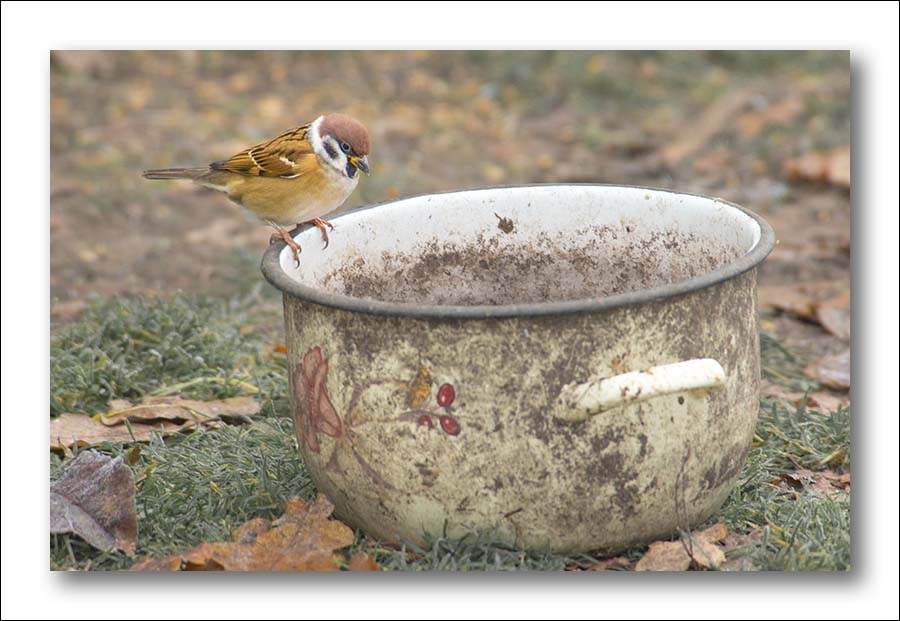
|
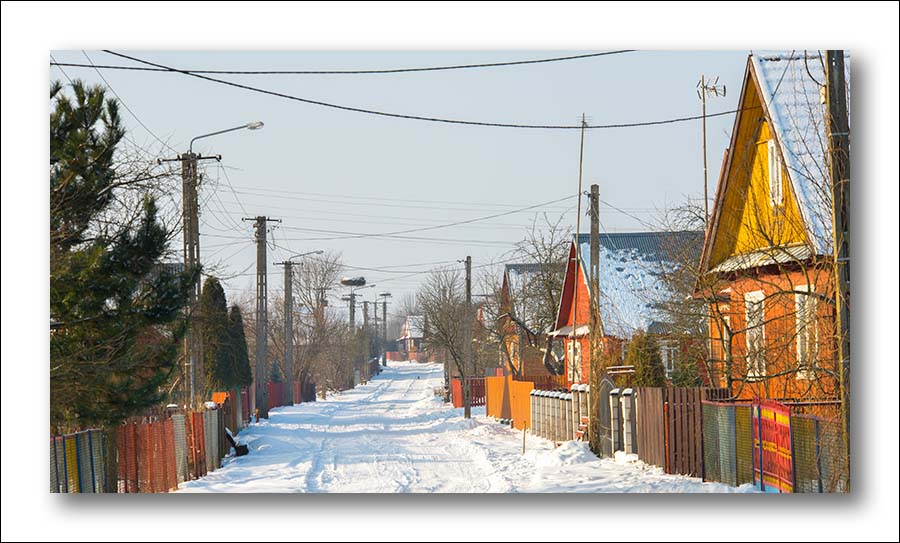
|
The
villageskape of Soce in winter appears to my like a story out of a
fairytale.
|
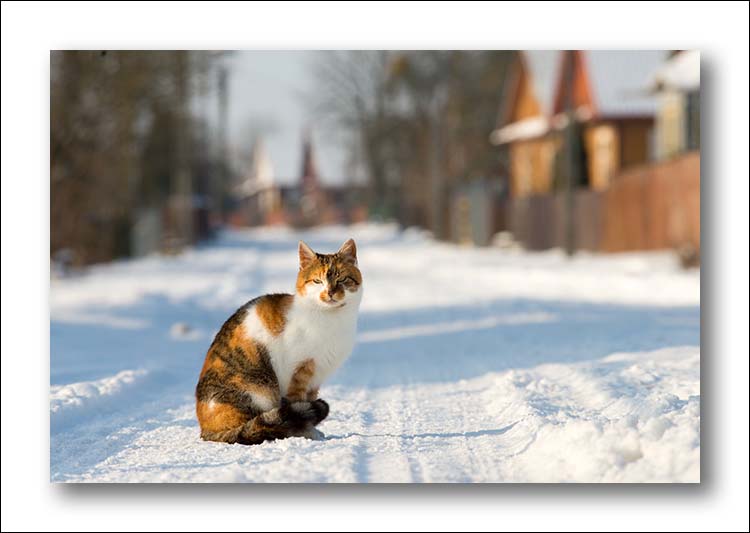
|
| |
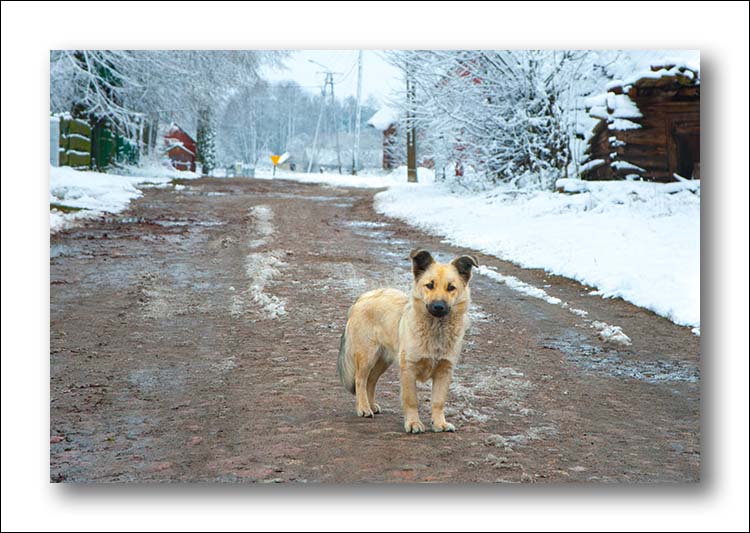
|
|
Wells
belong to almost every farm. Many of them are in use to water the
animals.
|
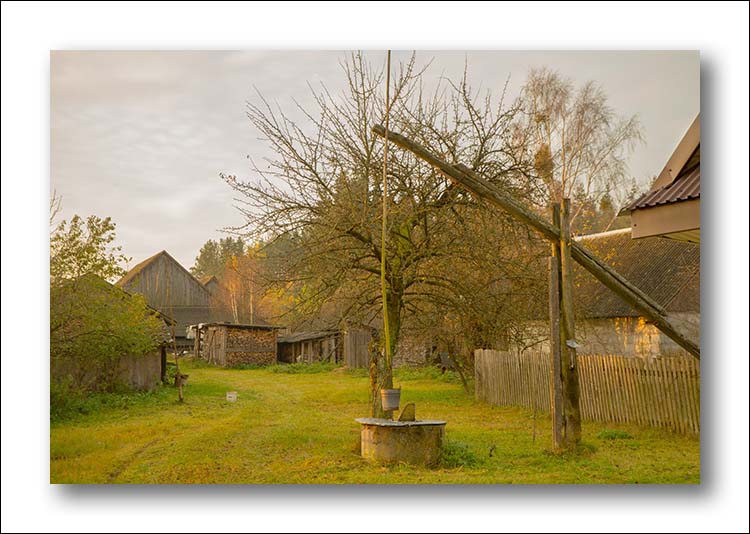
|
| |
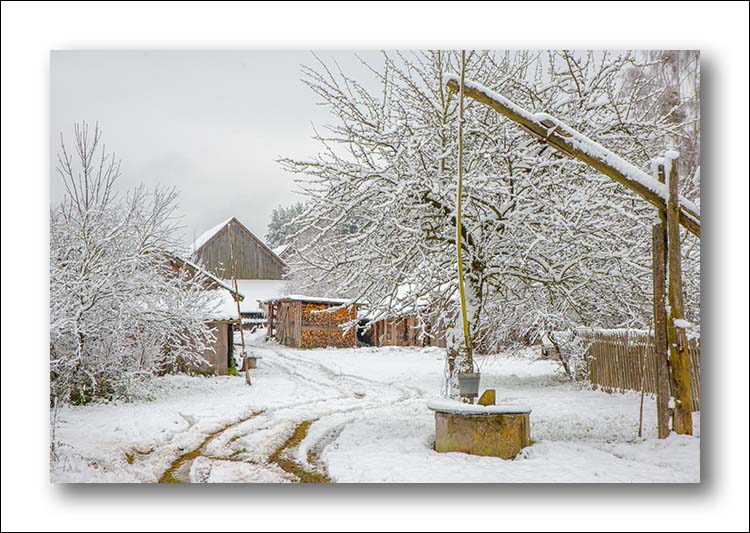
|
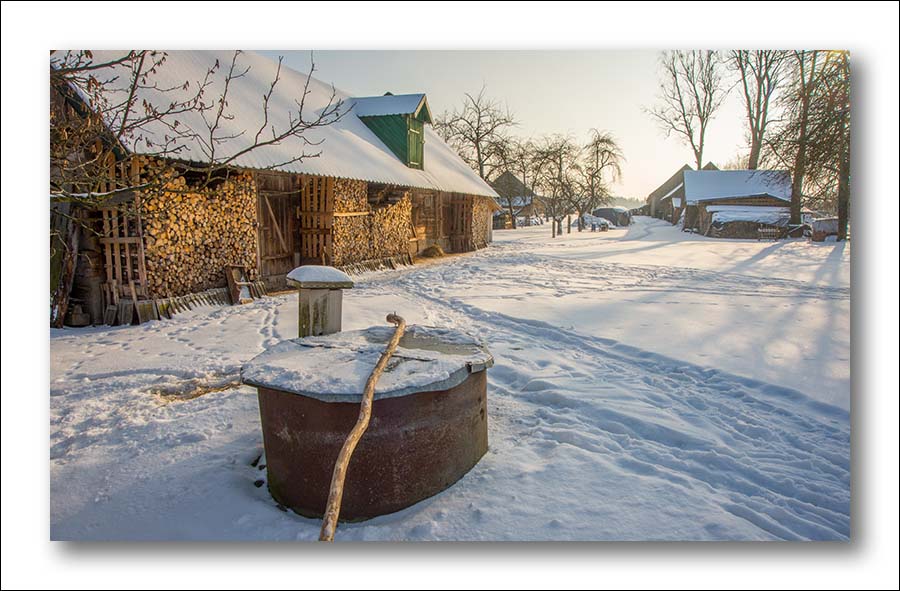
|
For this cock there is
obviously not much left to do in this cold and foggy winter morning.
|
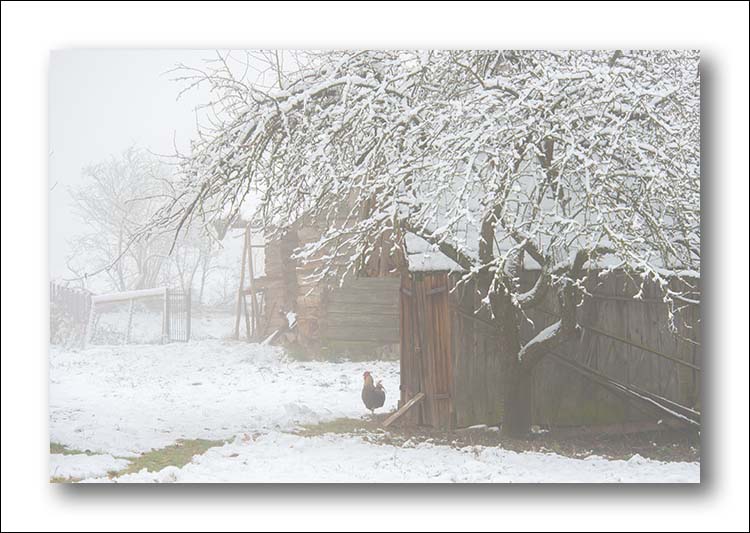
|
The village Soce is devided in
two sections by a small stream.
Here are pictures of the view
from one section to the other taken in autumn and winter. |
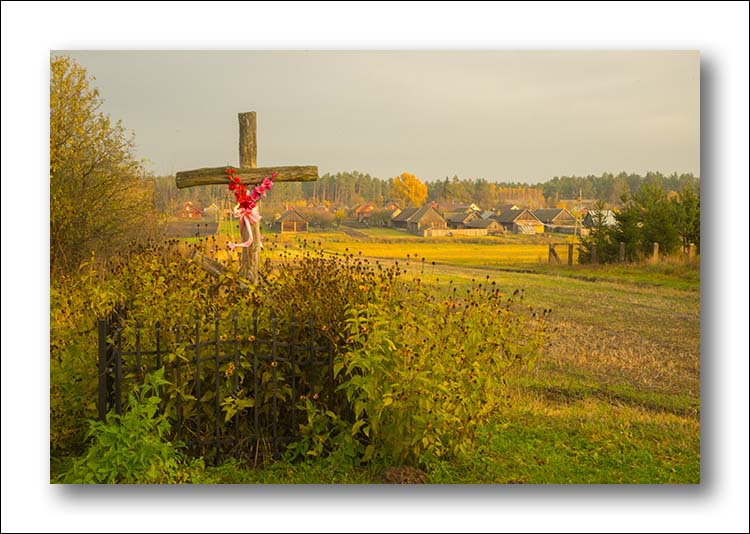
|
| |
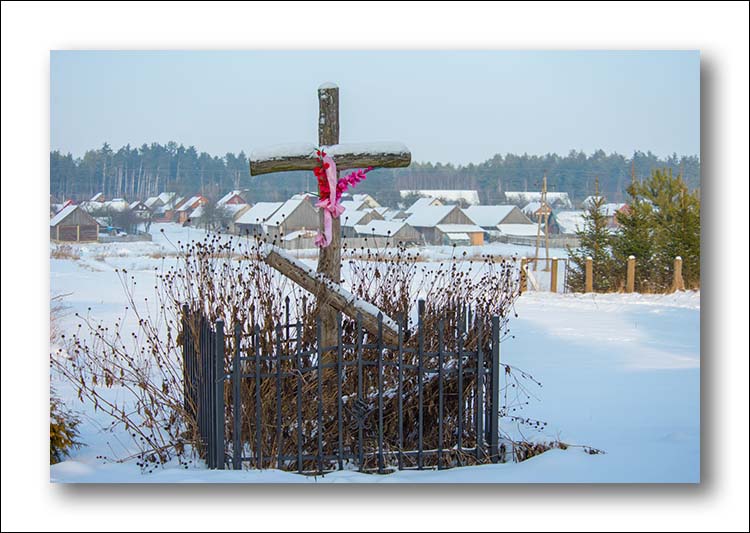
|
|
When I was coming into a
village there was often such a welcoming committee receiving me more or
less friendly.
And when I left the committee was on the spot
again.
This welcome committee has now the honour to say good by
to the visitors of this website.
There are many nice
places and villages along the upper Narew River which wait to be
discovered. The last picture shows the village Koźliki on the south bank
of the Narew River. ( ↓ ) Come and see!
|
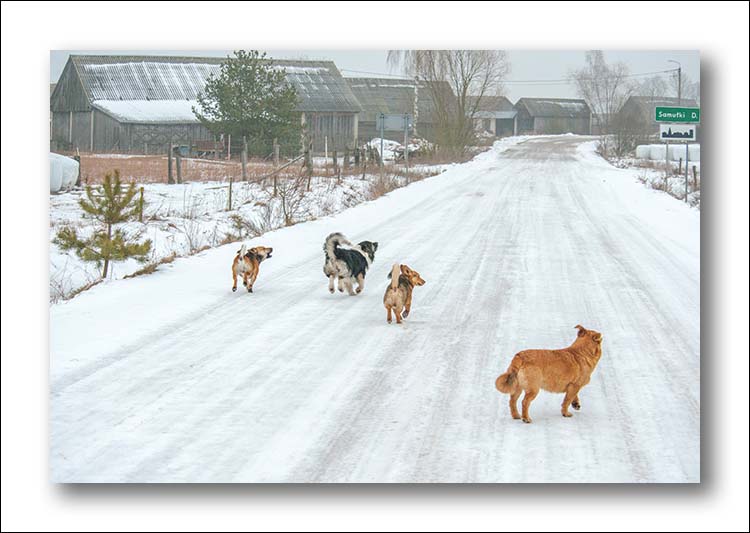
|
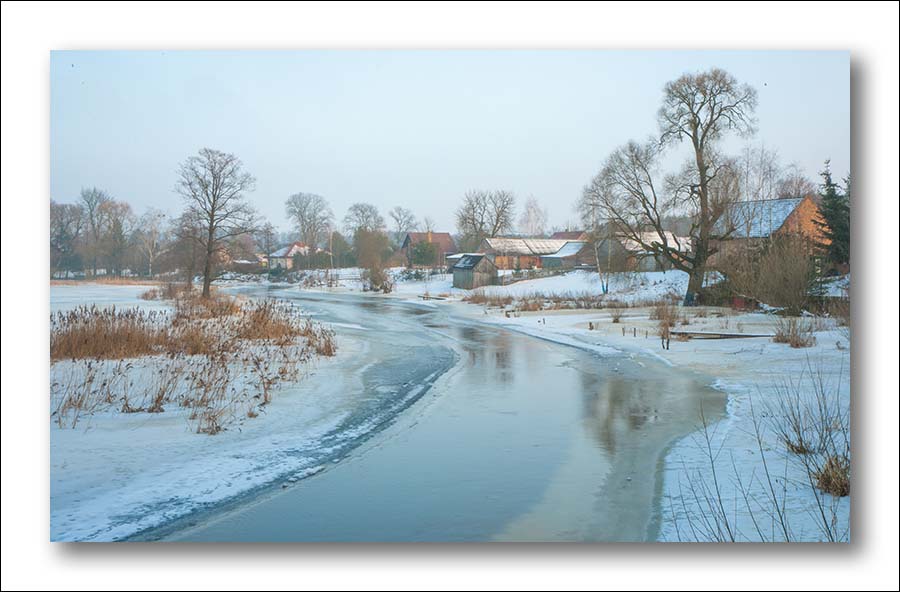
|
| |
|
| |
| |
